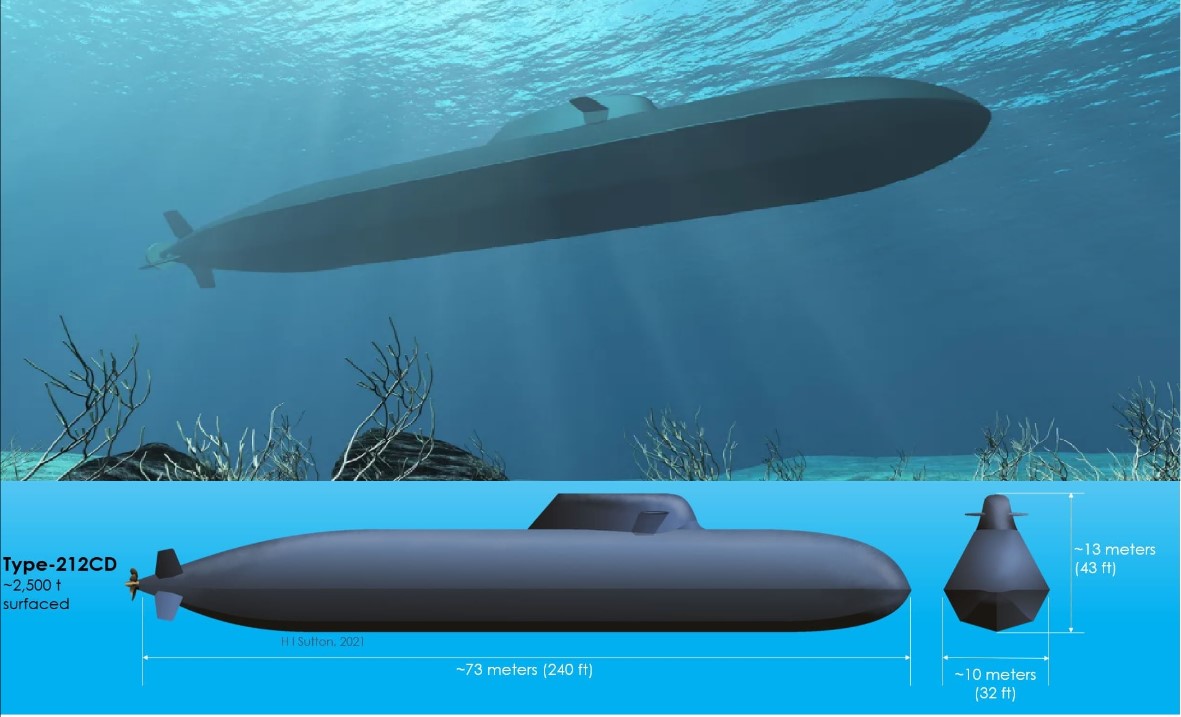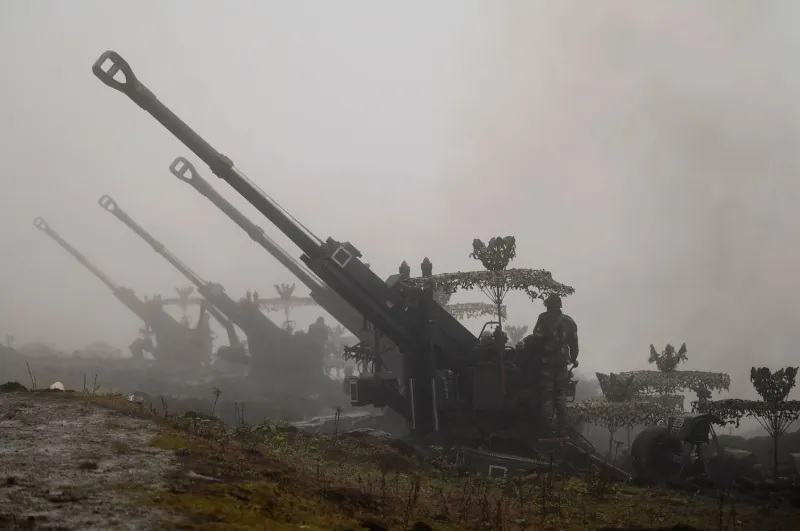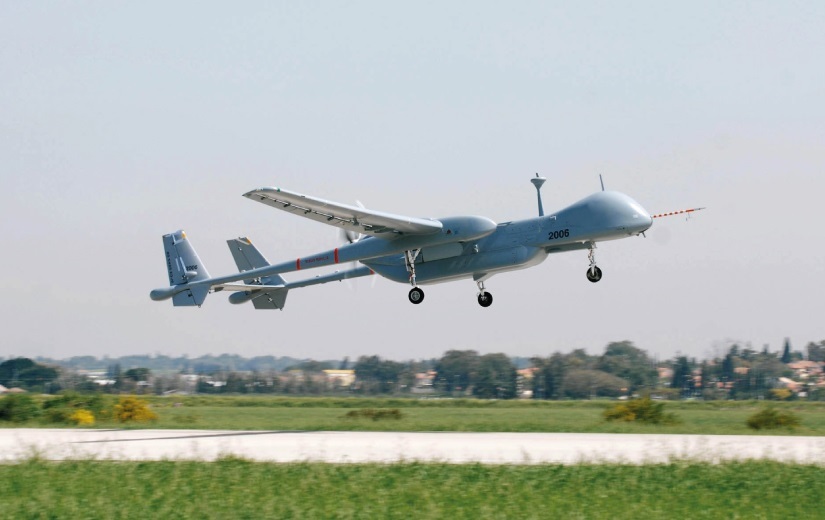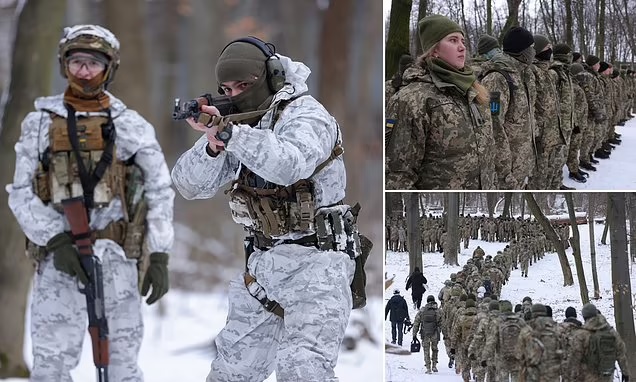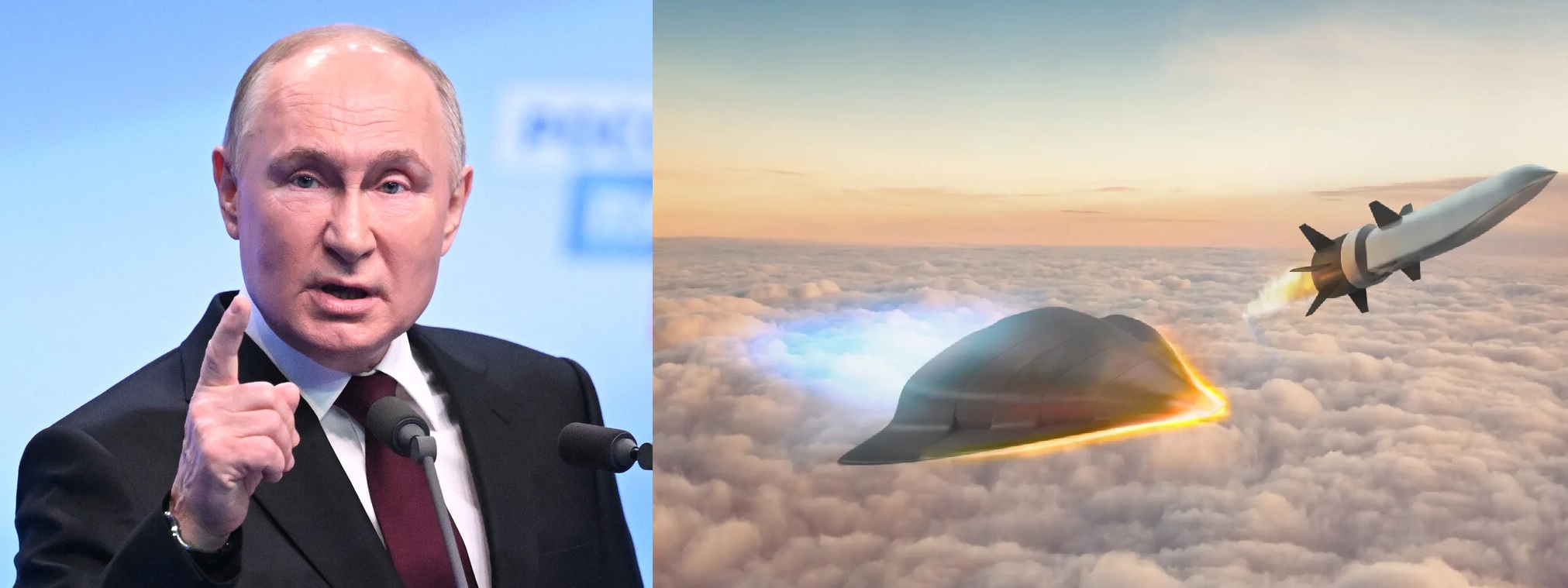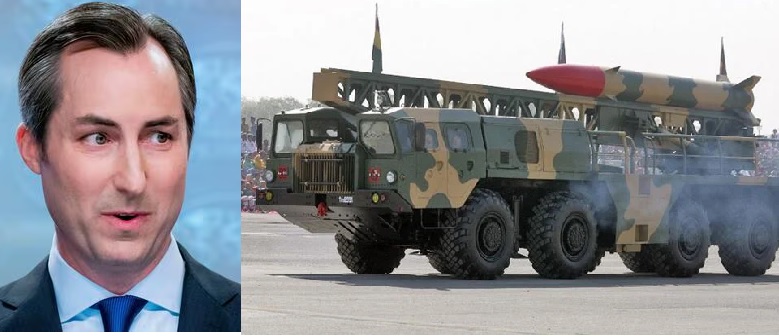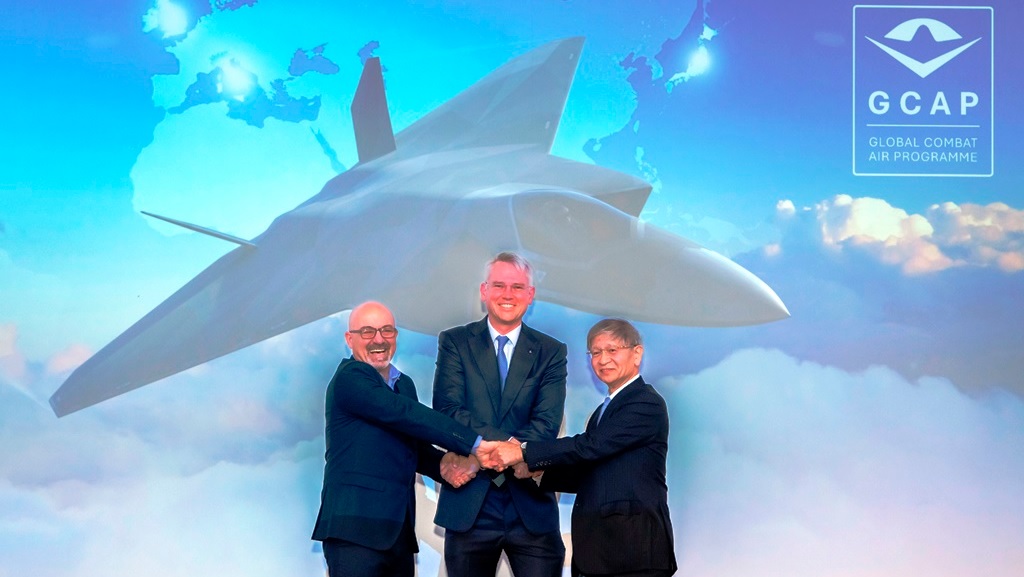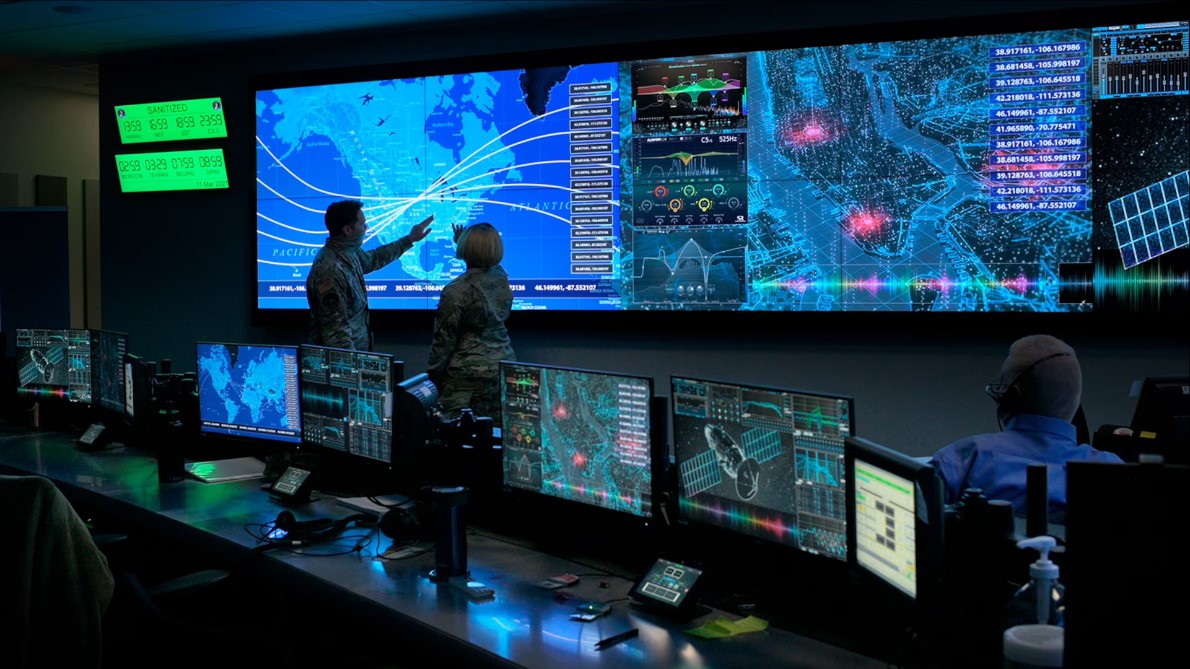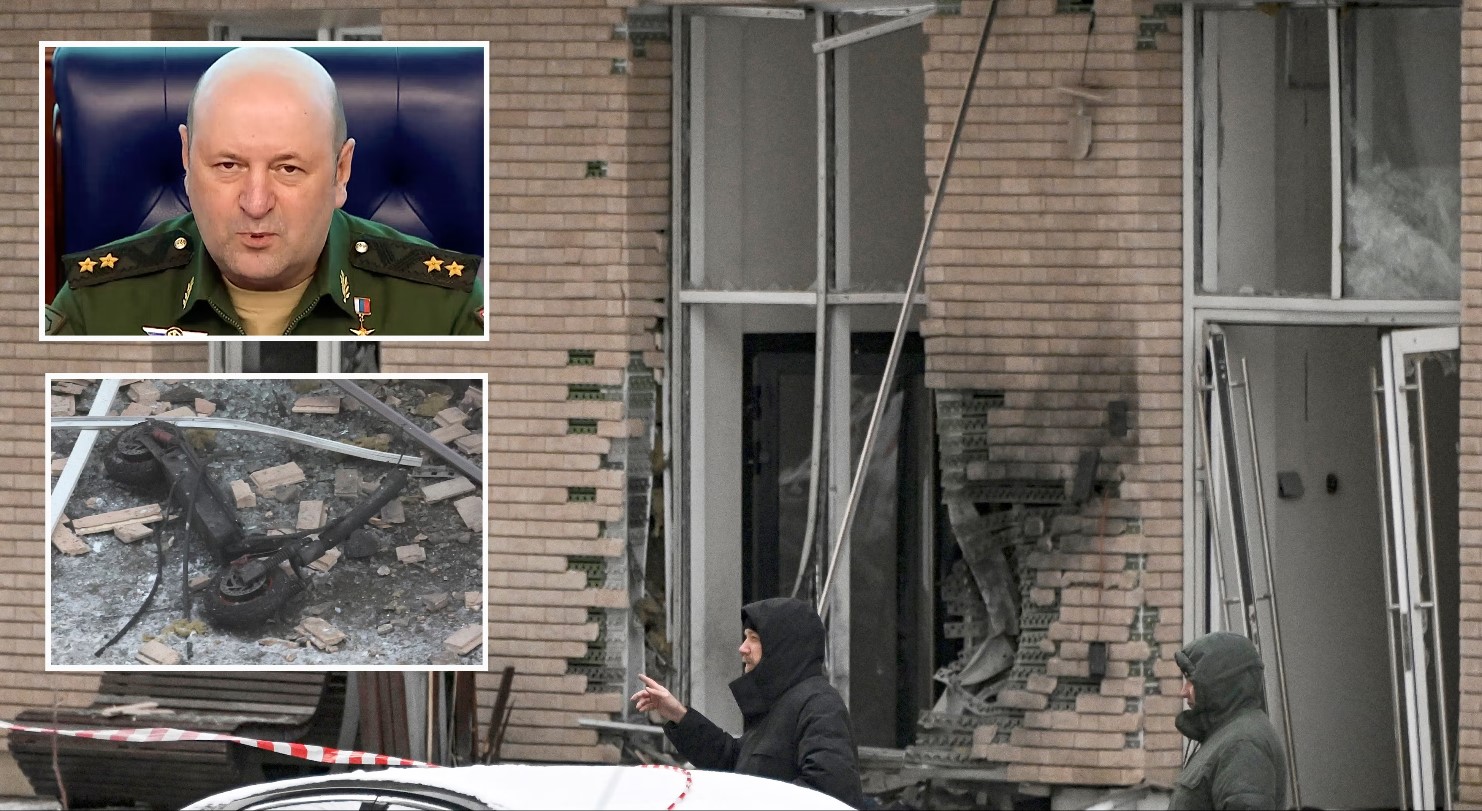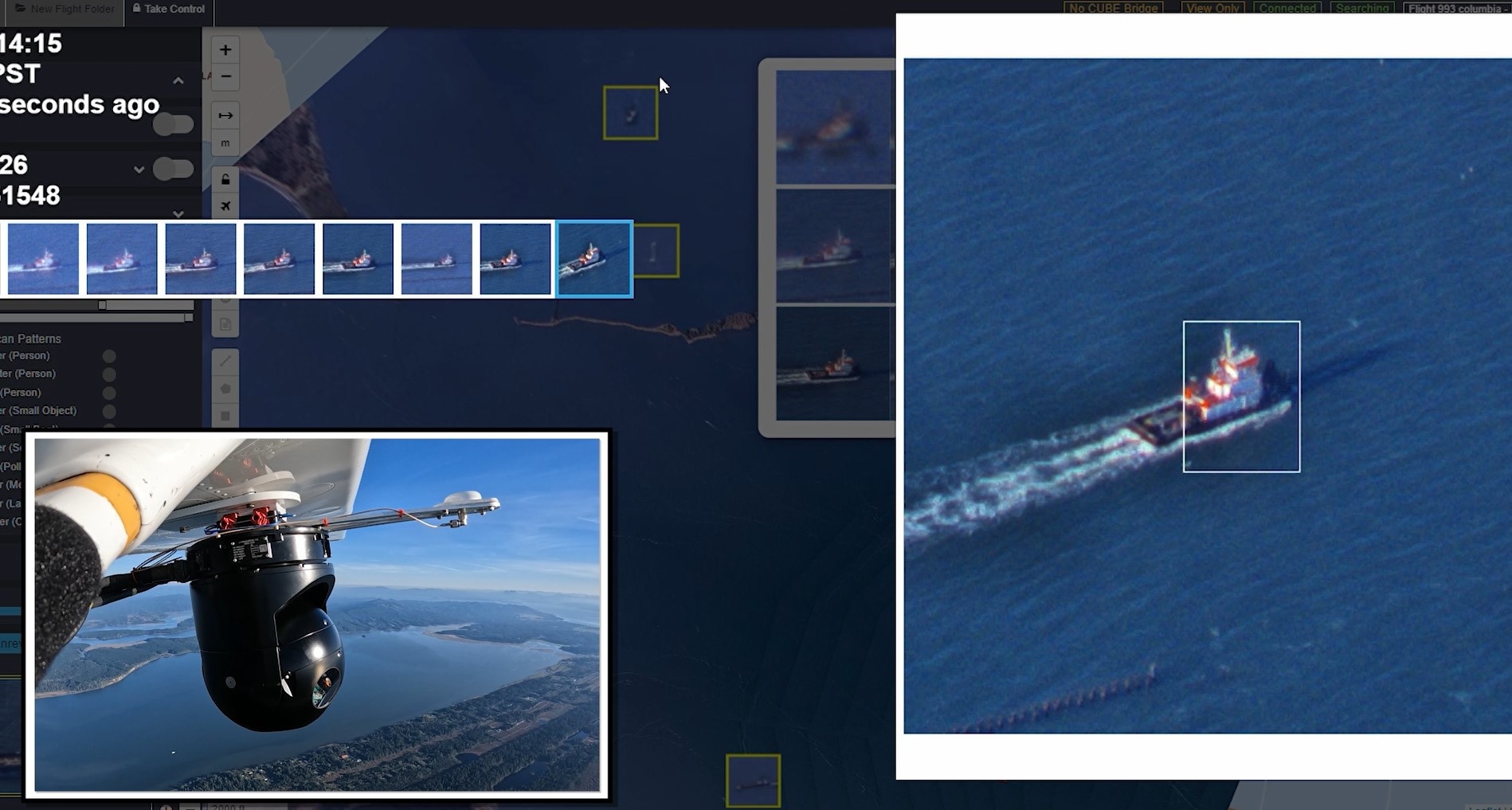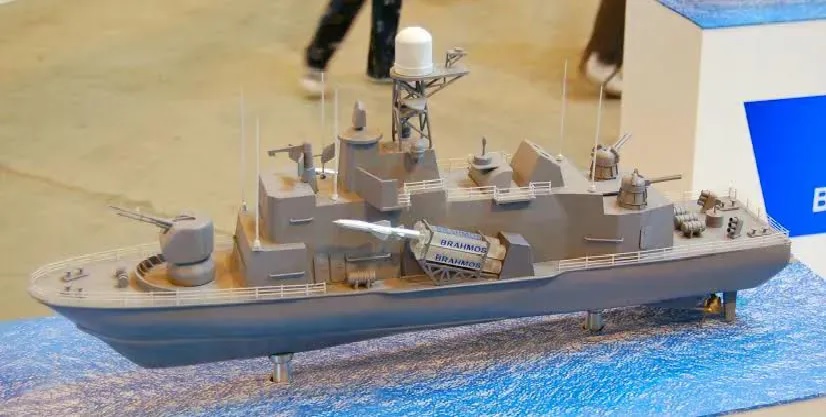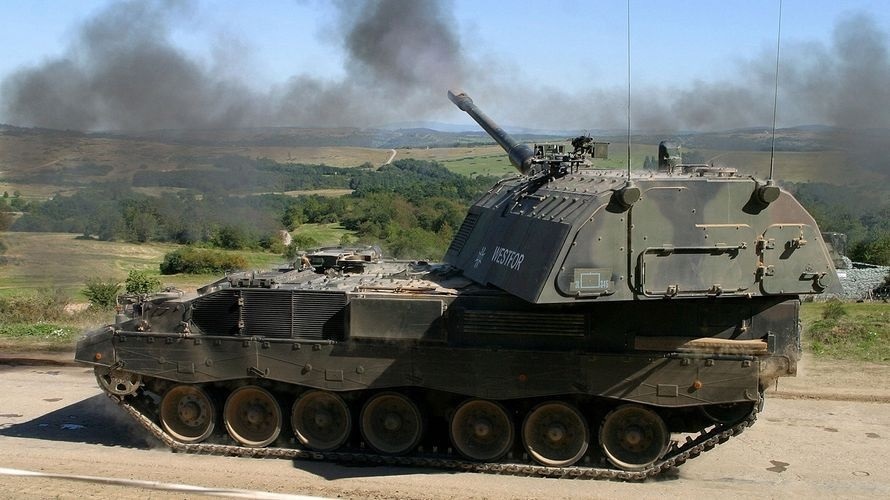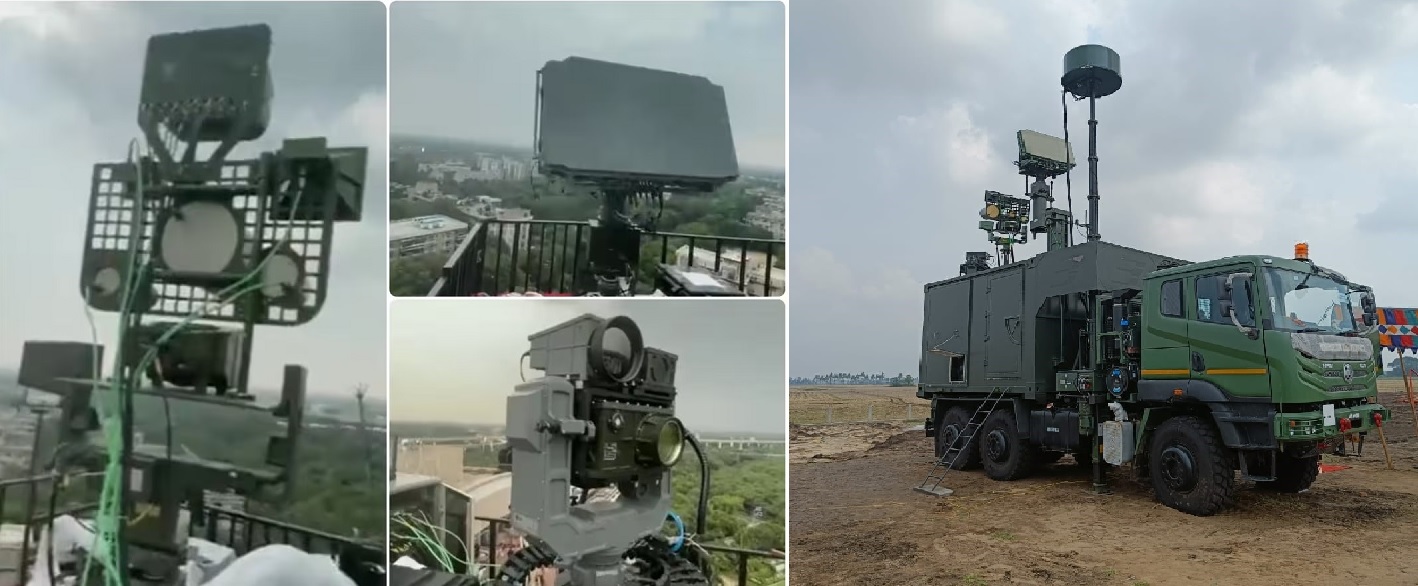World
Germany has taken a major step toward enhancing its naval capabilities by approving a budget for the procurement of four additional Type 212CD submarines. This decision, made during the German Parliament’s final committee sessions before Christmas, solidifies the Bundeswehr’s commitment to modernizing its fleet while addressing NATO readiness requirements. The newly approved funding brings the total number of Type 212CD submarines ordered by Germany to six, with a collaborative effort with Norway potentially expanding the fleet to a combined 12 units for both nations. Type 212CD: The Next Generation of Submarine Warfare The Type 212CD submarine represents cutting-edge advancements in underwater warfare. Equipped with Air-Independent Propulsion (AIP) systems, these submarines can operate silently for extended periods without surfacing, enhancing their stealth capabilities. The design is a product of German shipbuilder Thyssenkrupp Marine Systems (TKMS) and includes features tailored to meet the operational needs of both the German and Norwegian navies. Key specifications include: Length: Approximately 73 meters Displacement: Around 2,500 tons submerged Crew: 20-30 personnel Armament: Torpedoes, mines, and the IDAS (Interactive Defense and Attack System for Submarines), a versatile missile capable of engaging aerial, surface, and ground targets. Operational Range: Extended range owing to the fuel-cell-based AIP technology. Strategic Implications Germany’s approval of additional Type 212CD submarines aligns with NATO’s evolving readiness requirements, which call for at least five operational German submarines by 2031. To achieve this goal, Germany is not only expanding its submarine fleet but also addressing midlife upgrades (MLU) for its current six Type 212A submarines. These upgrades are necessary to ensure their operational viability beyond 2035, but detailed plans and funding for these measures are still pending. Norway, Germany’s partner in the Type 212CD program, has also expressed interest in increasing its initial order from four submarines to six. This collaborative procurement aims to bolster the maritime defense posture of both nations, ensuring effective deterrence against potential threats. IDAS Missile System: Enhanced Submarine Capabilities Alongside the new submarines, Germany has approved funding for the IDAS missile system, a groundbreaking technology designed for submarine-launched operations. The IDAS missile offers a range of over 15 kilometers and is equipped with an imaging infrared seeker and a fiber-optic data link, allowing precise target engagement. This system can counter threats from low-flying aircraft, surface vessels, and even land-based targets. Mounted within existing 533mm torpedo tubes, IDAS enhances the operational flexibility of the Type 212CD fleet. Challenges Ahead Despite these ambitious plans, challenges loom over the expansion of Germany’s submarine fleet. Recruitment shortfalls in the Bundeswehr have already impacted the Navy’s ability to staff its current vessels. Moreover, the maintenance backlog for existing Type 212A submarines, many of which are overdue for upgrades, could strain resources. The Navy’s broader modernization goals, including plans to acquire F126 ASW frigates and F127 AAW frigates, add further complexity to the resource allocation process. Production and Future Prospects TKMS is poised to ramp up submarine production to meet Germany and Norway’s demands. The company has expanded its capabilities with a new submarine production facility in Kiel and the acquisition of MV Werften in Wismar. These developments position TKMS to deliver the first Type 212CD to Norway by 2027, with Germany receiving its initial deliveries in 2031 and 2034. Beyond Germany and Norway, TKMS is exploring export opportunities for the Type 212CD, with potential customers including Canada, Poland, and India. While negotiations with India focus on the Type 214NG, any additional orders would further drive the need for increased production capacity. Conclusion The Bundestag’s approval of the Type 212CD procurement marks a significant step in strengthening Germany’s naval capabilities. These advanced submarines, coupled with the IDAS missile system, promise to enhance NATO’s maritime security framework. However, the path to achieving these ambitious goals requires careful navigation of logistical, financial, and manpower challenges.
Read More → Posted on 2024-12-19 16:04:46Space & Technology
Danish aerospace leader Terma has joined forces with the European Space Agency (ESA) to support the ambitious Ramses mission, an integral component of ESA’s Space Safety programme. This collaboration is designed to enhance planetary defense mechanisms by studying the asteroid Apophis during its historic close approach to Earth in 2029. The Ramses spacecraft, set for launch in April 2028, will arrive at Apophis two months before the asteroid’s closest pass to Earth. Measuring around 375 meters in diameter, Apophis will skim within 32,000 kilometers of Earth—closer than many satellites in orbit. This event offers a unique opportunity to observe how Earth’s gravity affects the asteroid’s orbit, rotation, and surface features. Terma’s Role: The Remote Terminal Unit (RTU) At the heart of Terma’s involvement is its state-of-the-art Remote Terminal Unit (RTU). This vital technology, which has previously been used successfully in ESA’s HERA mission, is designed to manage the spacecraft’s propulsion, communication, and other essential systems. Known for its reliability under extreme space conditions, the RTU acts as a bridge between the spacecraft's subsystems, enabling seamless operations throughout the mission. The RTU’s technical specifications showcase its versatility. It integrates with the spacecraft’s On-Board Computer (OBC) to monitor and control critical systems such as thermal regulation, Attitude and Orbit Control Systems (AOCS), and sensor arrays. Its modular design ensures easy customization, making it adaptable for Ramses’ specific objectives. Advancing Scientific Knowledge and Defence The Ramses mission is a significant leap in understanding asteroid behavior. By observing Apophis before, during, and after its Earth flyby, scientists aim to gain insights into how near-Earth objects respond to external forces. Such data is crucial for developing strategies to deflect potentially hazardous asteroids, thereby improving Earth’s planetary defense capabilities. The spacecraft’s advanced instrumentation will analyze changes in Apophis’s physical structure, including potential shifts in its spin rate or the emergence of surface cracks due to tidal forces. These observations will provide a wealth of information to refine asteroid mitigation techniques. A Testament to Collaboration Terma’s involvement underscores its commitment to space safety and scientific advancement. “Terma is proud to contribute to the Ramses mission by providing our proven Remote Terminal Unit technology. This partnership highlights our dedication to delivering innovative solutions that drive progress in planetary defense,” said Günther Lackner, Senior Vice President at Terma Space. Building a Safer Future The Ramses mission exemplifies the power of international collaboration and technological innovation in addressing global challenges. With Terma’s reliable RTU technology playing a pivotal role, the mission is set to deliver groundbreaking discoveries that will shape the future of planetary defense. By participating in this landmark effort, Terma not only supports the scientific community but also takes a critical step toward safeguarding Earth against extraterrestrial threats.
Read More → Posted on 2024-12-19 15:59:05India
The Indian Army is embracing cutting-edge robotic technology to revolutionize the maintenance of its artillery and tank gun barrels. The Gridbots VIPER robot, now undergoing trials at select military locations, promises to replace traditional manual methods with precision-driven, automated solutions. A recent video showcasing the robot’s functionality has garnered significant attention, underscoring its potential to enhance the operational readiness of the armed forces. Challenges of Manual Gun Barrel Maintenance For decades, cleaning and inspecting gun barrels have relied on a manual process involving steel brushes attached to long rods. While this method is tried and tested, it presents several challenges: Labor-Intensive: Teams of personnel are required, making it a time-consuming and resource-heavy task. Inconsistent Results: Manual cleaning often struggles to remove deposits like carbon residue or copper slags from the rifling grooves inside barrels. Barrel Wear: Steel brushes can cause gradual wear and tear, reducing the barrel’s lifespan. Operational Constraints: In combat zones or under high operational stress, manual cleaning can be impractical, leading to performance issues from unclean barrels. The Gridbots VIPER: A Game-Changer for Gun Barrel Maintenance The VIPER robot is designed to tackle these challenges head-on. Equipped with advanced technology like zSCAN, a highly accurate laser 3D profilometer, the robot offers a comprehensive solution for both cleaning and inspecting gun barrels across artillery, tanks, and even submarine and airborne weapon systems. Key Features of the VIPER Robot: 3D Profilometry:The robot uses laser technology to provide a detailed analysis of the barrel’s condition. It can accurately measure imperfections, assess wear and tear, and identify potential issues that may affect performance. Automated Cleaning:Soft nylon brushes replace the traditional steel brushes, ensuring effective removal of carbon, copper slags, fouling, and combustion residues without causing damage to the rifling or barrel interior. Post-Cleaning Lubrication:After cleaning, the VIPER robot applies a protective layer of lubrication to prevent corrosion and enhance the barrel’s durability. Integrated Drying Mechanism:The built-in drying system ensures the barrel is instantly ready for use, irrespective of environmental conditions. This feature is especially valuable in combat scenarios. Advantages for the Indian Army By automating a critical yet labor-intensive maintenance process, the VIPER robot offers the Indian Army numerous benefits: Improved Efficiency: Maintenance tasks can be completed faster and more effectively, enhancing operational readiness. Reduced Manpower: Automation minimizes the need for large maintenance teams, freeing up personnel for other critical roles. Enhanced Barrel Longevity: The gentle cleaning process extends the life of gun barrels, reducing long-term costs. Readiness in Combat Zones: The VIPER’s portability and efficiency ensure that maintenance can be carried out even in challenging environments, maintaining peak weapon performance. Future Prospects The trials of the Gridbots VIPER robot signify a significant step towards modernizing the Indian Army’s maintenance protocols. If successfully integrated, this technology could pave the way for broader adoption across military units, not only in India but also globally. Its ability to combine inspection, cleaning, and lubrication in a single automated system makes it a valuable asset for artillery and armored units, ensuring operational superiority in the field. The Gridbots VIPER robot exemplifies the Indian Army’s commitment to leveraging advanced technology for enhanced efficiency and combat readiness, setting a new standard in military maintenance practices.
Read More → Posted on 2024-12-19 15:54:34India
The United States Department of Defense has raised fresh alarms about China’s growing military presence along the Line of Actual Control (LAC) with India. According to the Pentagon's latest annual report, China has stationed around 120,000 troops, along with tanks, howitzers, missiles, and other heavy weaponry, across the disputed 3,488-km-long boundary, which extends from Ladakh in the west to Arunachal Pradesh in the east. Persistent Military Build-Up Since Galwan Since the deadly Galwan Valley clash in June 2020, the People's Liberation Army (PLA) has not reduced its military presence along the LAC, despite selective troop disengagements in certain areas. The report highlights that China has built extensive infrastructure to support brigade-level deployments in forward areas, ensuring the PLA's ability to sustain its operations. Over 20 combined arms brigades (CABs) remain stationed in strategic locations across the western, middle, and eastern sectors of the LAC. The Pentagon emphasized that China's Western Theatre Command, which oversees operations along the Indian border, continues to prioritize this frontier. The prolonged standoff has been fueled by differing perceptions of the border, resulting in clashes, force build-ups, and accelerated military infrastructure development. Strengthened Military Infrastructure In addition to deploying troops, the PLA has fortified its positions with advanced weaponry and support facilities. Heavy artillery, surface-to-air missiles, and combat-ready tanks have been strategically positioned to counter any potential escalation. This military posturing reflects China's broader strategy to secure its territorial claims and maintain a dominant presence in the region. Nuclear Modernization and Space Capabilities The Pentagon report also sheds light on China’s rapid nuclear modernization. With over 600 operational nuclear warheads as of mid-2024, Beijing is on track to amass more than 1,000 warheads by 2030. China’s diverse arsenal includes low-yield precision-strike missiles and intercontinental ballistic missiles (ICBMs) capable of delivering multi-megaton payloads. The report further highlights China's advancements in counter-space technologies, such as anti-satellite missiles, co-orbital satellites, and directed-energy systems like lasers. These developments bolster China's ability to contest space-based assets and deny adversaries access to critical domains. Rising Tensions with Taiwan Beyond its Indian border, China’s military assertiveness has also grown in the Taiwan Strait. The PLA has increased its naval and aerial activities, frequently breaching Taiwan’s air defense identification zone. The Pentagon describes Taiwan as the most significant flashpoint in U.S.-China relations, warning that Beijing’s aggressive posture could escalate into a conflict with global repercussions. The Biden administration has responded by enhancing U.S. military presence in the Indo-Pacific, aiming to deter Beijing's aggression while maintaining open channels for diplomatic engagement. Strengthening China-Russia Military Ties China’s military collaboration with Russia also features prominently in the Pentagon's report. Beijing has reportedly provided Moscow with dual-use items for its war efforts in Ukraine, signaling a deepening partnership aimed at challenging U.S. global influence. This alliance reflects a shared goal of reshaping the international order into a more multipolar system. Internal Challenges: Corruption in the PLA Despite its rapid military expansion, the PLA faces internal challenges, notably corruption scandals within its ranks. High-profile expulsions, such as those of former Defense Ministers Li Shangfu and Wei Fenghe, have shaken the Central Military Commission, which oversees the PLA. The ongoing investigations into senior officials underscore concerns about the military’s internal stability. Implications for Regional Security China’s persistent military build-up along the Indian border, coupled with its nuclear modernization and increasing assertiveness in Taiwan and the Indo-Pacific, underscores its ambition to dominate regional security dynamics. While internal corruption poses challenges, Beijing’s commitment to military modernization remains steadfast. As China continues to bolster its military capabilities and strengthen ties with Russia, regional tensions are likely to escalate, placing significant pressure on India and its allies to counterbalance Beijing’s aggressive posture.
Read More → Posted on 2024-12-19 15:50:42India
Economic Explosives Ltd (EEL), a Nagpur-based private defence company, has set a significant benchmark in India's aerospace sector with the inauguration of a state-of-the-art drone testing facility. Equipped with a 1.4-kilometer runway, the facility is tailored to support the development and testing of long-range Medium Altitude Long Endurance (MALE) unmanned aerial vehicles (UAVs). This ambitious project aims to bolster India's indigenous drone capabilities while catering to the critical operational requirements of the Indian Armed Forces. A First in Private Defence Infrastructure The testing facility, reportedly the largest of its kind within India's private sector, marks a pivotal advancement in the country's journey toward achieving self-reliance in defence technology. Designed exclusively for UAV trials, it will expedite the evaluation and refinement of EEL's MALE UAV, a strategic asset intended to strengthen surveillance, reconnaissance, and precision-strike capabilities for the armed forces. The MALE UAV project represents a critical component of India's modernization efforts in defence, enabling sustained operational endurance at altitudes of up to 30,000 feet. These drones, often equipped with advanced imaging systems, radar, and weaponry, play a vital role in border security and counter-terrorism operations. Strategic Significance of the Facility EEL's facility will not only serve as a hub for testing UAVs but also as a crucial enabler for innovation in India's burgeoning defence sector. By investing in such a large-scale, high-tech infrastructure, the company reinforces the strategic importance of indigenous development in aerospace technology. Key aspects of this development include: Accelerating Self-RelianceThe facility provides a dedicated environment for testing critical systems, ensuring the development of homegrown solutions to meet the armed forces' needs. This aligns with the "Make in India" initiative, which emphasizes reducing dependence on foreign defence imports. Enhancing Private Sector ContributionEEL's project underscores the growing role of private companies in shaping India's defence capabilities. With cutting-edge testing infrastructure, private players like EEL are bridging the gap between design and deployment, significantly reducing the timeline for operational readiness. Strengthening National Defence CapabilitiesThe MALE UAVs developed at this facility will dramatically improve the Indian Armed Forces' ability to conduct extended surveillance missions, monitor sensitive borders, and execute precision strikes in hostile environments. Bridging Technology Gaps The Indian defence sector has long relied on imports to meet its UAV requirements, with platforms like the Israeli Heron drones currently in use. However, initiatives like EEL's testing facility represent a paradigm shift toward locally developed solutions. The infrastructure will allow advanced flight testing, endurance trials, and payload integration under real-world conditions, enabling EEL to deliver a robust and versatile UAV platform. The Road Ahead As the global demand for UAVs surges, EEL's investment signals India's readiness to compete in the international drone market. The testing facility is poised to position India as a key player in UAV technology, contributing not only to domestic defence but also to exports in the future. With this landmark development, Economic Explosives Ltd demonstrates the potential of India's private sector to drive technological breakthroughs, ensuring that the Indian Armed Forces are equipped with the cutting-edge tools required to safeguard national security. The new drone testing facility and the MALE UAV program signify a giant leap forward in India's aerospace and defence capabilities, paving the way for a self-reliant and secure future.
Read More → Posted on 2024-12-19 15:47:15World
The European Union (EU) is intensifying its support for Ukraine by planning to train an additional 15,000 Ukrainian soldiers by early 2025. This effort is part of the EU Military Assistance Mission for Ukraine (EUMAM), which has already trained approximately 60,000 Ukrainian troops since its inception in October 2022. EUMAM's Objectives and Operations EUMAM's primary goal is to enhance Ukraine's ability to defend its territorial integrity and sovereignty against Russian aggression. The training is conducted on EU territory, with significant contributions from countries like Poland and Germany. Currently, 24 EU member states are involved, providing experienced personnel and implementing various training modules. The mission is financed through the European Peace Facility, with a budget of €409 million ($429 million) allocated until November 2026. Recent Developments and Training Expansion In response to Ukraine's request for training within its own borders, the EU has decided to continue conducting training as close to Ukrainian territory as possible but not within Ukraine itself, citing safety concerns and the need for unanimous agreement among all 27 EU members. Additionally, the EU has been involved in specialized training programs, such as the F-16 training coalition, which includes countries like Denmark, the Netherlands, and the United States. This coalition aims to train Ukrainian pilots, technicians, and support personnel on F-16 fighter jets, with training taking place in various locations, including Denmark and the United States. Financial and Military Support Beyond training, the EU has provided substantial military and financial aid to Ukraine, amounting to €122 billion. This support includes the provision of ammunition, missiles, and various military equipment. For instance, as of August 2024, the EU had supplied approximately 650,000 rounds of ammunition and missiles to Ukraine, striving to reach a target of 1 million shells by the end of the year. Conclusion The EU's commitment to training an additional 15,000 Ukrainian soldiers by early 2025 underscores its unwavering support for Ukraine amid ongoing conflicts. By enhancing the capabilities of Ukrainian forces through comprehensive training programs and substantial financial aid, the EU aims to bolster Ukraine's defense and contribute to regional stability.
Read More → Posted on 2024-12-19 15:43:07World
Russian President Vladimir Putin has thrown down the gauntlet to the United States, suggesting a missile “duel” to test the effectiveness of Russia’s new Oreshnik hypersonic ballistic missile against American missile defense systems. This bold proposal, made on Thursday, underscores Russia’s confidence in its latest military technology while attempting to silence Western skepticism surrounding the Oreshnik’s capabilities. Putin proposed that both countries identify a specific target for the experiment, which would be protected by U.S. missile defense systems. “We’re ready for such an experiment,” Putin said, signaling Russia’s willingness to demonstrate the Oreshnik’s ability to penetrate even the most advanced missile shields. What Makes the Oreshnik Stand Out? The Oreshnik is a hypersonic intermediate-range ballistic missile (IRBM) capable of speeds exceeding Mach 10, making it extremely difficult to intercept. It is equipped with advanced maneuvering capabilities and carries multiple independently targetable reentry vehicles (MIRVs). This means the missile can deliver several warheads to different targets, simultaneously overwhelming enemy defenses. While Putin emphasized that the Oreshnik represents modern military innovation, it is reportedly built on the foundation of earlier Russian missile designs. This evolution has enabled Moscow to refine and integrate advanced features into the weapon system while maintaining reliability. Deployment and Strategic Context The Oreshnik was first used in combat on November 21, 2024, when it targeted the Ukrainian city of Dnipro. According to Russian officials, this strike was a direct response to Ukraine’s use of U.S.-supplied ATACMS ballistic missiles and British Storm Shadow cruise missiles in attacks on Russian territory. This deployment marked a significant escalation in the conflict, demonstrating Russia’s readiness to employ its most advanced military assets in response to Western-supported Ukrainian operations. Analysts view this as a strategic signal to both Ukraine and its Western allies, emphasizing Russia’s deterrent capabilities. Western Scepticism and Strategic Implications Despite Putin’s confidence, Western experts remain divided on the Oreshnik’s revolutionary claims. Some argue that it is an incremental upgrade rather than a groundbreaking innovation. However, its hypersonic speed and multi-warhead design represent a substantial challenge to current U.S. missile defense systems, which are designed primarily to counter slower, more predictable threats. Putin’s proposal of a missile duel also highlights the growing arms race between Russia and the United States in hypersonic technology. Both nations have been investing heavily in developing these weapons, which could potentially reshape global strategic balances. A New Era of Military Showdowns? Whether or not the United States accepts Putin’s challenge, the suggestion itself is a bold move aimed at reinforcing Russia’s position on the global stage. By showcasing its hypersonic capabilities, Russia seeks to project strength and challenge the technological superiority traditionally associated with U.S. defense systems. As tensions between Moscow and Washington remain high, the Oreshnik missile duel proposal is likely to fuel further debate on the effectiveness of modern missile defense systems and the evolving nature of strategic deterrence.
Read More → Posted on 2024-12-19 15:30:05World
The United States has announced sanctions against four Pakistani entities linked to advancing the country’s ballistic missile program, signaling a significant move to curb the proliferation of weapons of mass destruction. The decision, which the State Department revealed on Wednesday, underscores growing U.S. concerns about the increasing sophistication and range of Pakistan’s missile capabilities. State Department spokesperson Matthew Miller, in a statement posted on X (formerly Twitter), emphasized the seriousness of the issue. He stated, “We have been clear and consistent about our concerns, and we will continue to engage constructively with Pakistan on these issues.” The sanctions were imposed under Executive Order 13382, which specifically targets proliferators of weapons of mass destruction and their delivery mechanisms. At the center of the controversy is the National Development Complex (NDC), a key institution based in Islamabad that spearheads Pakistan's ballistic missile development. The NDC is credited with significant advancements in missile technology, particularly in the development of the Shaheen-series ballistic missiles. The U.S. accuses the NDC of acquiring specialized vehicle chassis and other launch support equipment to bolster Pakistan’s long-range missile capabilities. These technologies, deemed dual-use, play a critical role in expanding Pakistan's strategic reach, potentially altering the regional power balance. In addition to the NDC, three Karachi-based companies—Affiliates International, Akhtar and Sons Private Limited, and Rockside Enterprise—have also been sanctioned. According to the State Department, these companies have been instrumental in supplying equipment and materials crucial to Pakistan’s ballistic missile program. Affiliates International, for instance, facilitated the procurement of missile-applicable items, while Akhtar and Sons and Rockside Enterprise provided a range of components and logistical support to further the NDC's objectives. These sanctions aim to freeze any U.S.-based assets held by the entities and prohibit American businesses or individuals from engaging in transactions with them. The move is part of a broader strategy by Washington to disrupt the supply chains that enable missile development and proliferation globally. The U.S. decision has sparked a sharp response from Pakistan, with the Foreign Ministry labeling the sanctions as "discriminatory" and detrimental to regional stability. Pakistani officials have also questioned the evidence supporting these allegations, suggesting that the measures are politically motivated. This marks the latest chapter in the complex and often contentious relationship between Washington and Islamabad, particularly concerning military and security matters. While the sanctions have been criticized by Pakistan, the U.S. has defended its actions as necessary to prevent the spread of weapons of mass destruction. The State Department reiterated its commitment to addressing proliferation concerns and called for constructive engagement with Pakistan to mitigate risks associated with its missile program. This development underscores the broader international concern about missile proliferation in South Asia. Pakistan’s ballistic missile program, which is often portrayed as a counter to India’s own strategic capabilities, has long been a source of tension. The sanctions also highlight the ongoing challenges in maintaining non-proliferation norms in a region marked by deep-seated rivalries and security dilemmas. As the U.S. continues to monitor and address proliferation risks, this latest round of sanctions serves as a reminder of the complexities of balancing strategic interests, regional stability, and global security imperatives.
Read More → Posted on 2024-12-19 15:23:50Science
Russia has taken a monumental step in the fight against cancer by developing a cutting-edge mRNA-based vaccine aimed at treating cancer patients. This breakthrough is not just a scientific marvel but also a promise of hope, as the Russian government has pledged to provide the vaccine free of charge to its citizens starting in 2025. This development could redefine cancer treatment and has already captured global attention. How Does the Vaccine Work? The new vaccine leverages the power of mRNA technology, which gained fame during the COVID-19 pandemic, but with a unique twist. Instead of preventing a disease, this vaccine is designed to treat cancer by harnessing a patient’s own immune system. Here’s how it works: Personalized Approach: Genetic material is extracted from a patient’s tumor to identify unique proteins, or antigens, present on the cancer cells. Immune System Training: These antigens are used to create a customized mRNA vaccine. When injected, the vaccine “trains” the immune system to recognize and attack cancer cells bearing these specific antigens. Effective Targeting: Once primed, the immune system produces antibodies and activates T-cells to destroy the cancer cells without harming healthy tissues. This personalized approach offers a powerful weapon against cancer, especially for patients with advanced or treatment-resistant forms of the disease. Cutting-Edge Production with AI One of the biggest challenges in personalized medicine is the time and complexity involved in creating customized treatments. However, Russia’s vaccine has an edge. According to Alexander Gintsburg, director of the Gamaleya National Research Centre for Epidemiology and Microbiology, artificial intelligence and neural networks are being employed to accelerate the production process. “Currently, building personalized vaccines involves complex calculations, but with AI, we aim to reduce the process to just 30 minutes to an hour,” Gintsburg explained. The Ivannikov Institute plays a pivotal role in this effort, using advanced neural network computing to streamline vaccine production. Economic and Social Impact Each dose of the vaccine costs the Russian government approximately 300,000 rubles (around $2,869). Despite the high cost, the decision to provide it for free reflects a bold public health commitment, especially in a country grappling with rising cancer rates. In 2022 alone, Russia reported over 635,000 new cancer cases, with colon, breast, and lung cancers among the most prevalent. By eliminating financial barriers, Russia aims to make this life-saving treatment accessible to all, potentially reducing cancer mortality rates and improving overall public health. A Global Trend in Personalized Medicine Russia’s breakthrough aligns with global efforts to revolutionize cancer treatment. Similar personalized cancer vaccines are being developed in the United States and Europe: In the U.S., researchers at the University of Florida have tested an mRNA vaccine for glioblastoma, a deadly brain cancer. The vaccine triggered a strong immune response just two days after injection. In the U.K., scientists are trialing a vaccine for melanoma, the deadliest form of skin cancer. Preliminary results indicate significantly improved survival rates. While these efforts are still in clinical stages, Russia’s announcement positions it as a leader in this transformative field. Why mRNA? mRNA vaccines are a game-changer for cancer treatment. Unlike traditional vaccines that use weakened or inactivated pathogens, mRNA vaccines are designed to teach cells to produce antigens that activate the immune system. Key benefits include: Precision: Targeted therapy tailored to individual patients. Speed: Faster development and production timelines. Safety: No risk of interaction with the patient’s DNA. The technology’s adaptability, proven during the COVID-19 pandemic, has now opened new doors for oncology, offering hope for previously untreatable cancers. What Lies Ahead? As the vaccine moves closer to its 2025 rollout, it could mark the beginning of a new era in cancer treatment—not just in Russia, but globally. The promise of a free, personalized, and effective cancer vaccine has the potential to save millions of lives, reduce the emotional and financial toll of the disease, and inspire further innovations in personalized medicine. Russia’s groundbreaking achievement is more than a medical milestone—it’s a beacon of hope for the future of oncology.
Read More → Posted on 2024-12-18 16:24:24Space & Technology
Chinese scientists have taken a significant leap forward in the quantum computing race with the unveiling of Zuchongzhi 3.0, a groundbreaking 105-qubit quantum processor. Announced shortly after Google's debut of its own 105-qubit processor, the Willow, this development signals how closely China and the United States are matched in advancing one of the most revolutionary technologies of our time. Zuchongzhi 3.0, developed by a team led by renowned physicist Pan Jianwei at the University of Science and Technology of China, demonstrates computational power and stability that rivals its American counterpart. In a paper shared by the Chinese researchers, they described Zuchongzhi 3.0 as a device capable of bridging the computational gap between quantum and classical computers while providing a robust platform for practical applications. While the research is still awaiting peer review, the implications of such a system are profound. At its core, quantum computing leverages qubits, which, unlike the binary bits in classical computing, can exist in a “superposition” state, allowing them to represent both 0 and 1 simultaneously. This, combined with the phenomenon of quantum entanglement, enables quantum computers to perform calculations at speeds exponentially faster than traditional supercomputers. However, qubits are highly sensitive to errors caused by external noise and interference, making error correction one of the most critical challenges in quantum computing. Precision and Stability: Zuchongzhi’s Breakthroughs The Zuchongzhi 3.0 processor is being hailed for its high precision in qubit operations and enhanced stability. These advancements are vital as quantum computers scale up to tackle complex problems in areas like artificial intelligence, climate modeling, and drug discovery. The processor employs cutting-edge techniques in superconducting qubits, achieving a level of control and coherence that positions it as a serious rival to Google’s Willow. In comparison, Google’s Willow processor has achieved significant milestones in quantum error correction, a process critical to ensuring the reliability of quantum systems. The Willow leverages distance-5 surface code quantum error correction, a sophisticated method where qubits are arranged in a grid to detect and repair errors. Chinese scientists plan to implement similar techniques in Zuchongzhi 3.0, targeting distance-7 surface codes within months and aiming for even more advanced configurations, such as distance-9 and distance-11 codes, in the near future. A Global Race for Quantum Supremacy The unveiling of Zuchongzhi 3.0 highlights the growing intensity of the global quantum computing race, with both China and the U.S. investing heavily in this transformative field. Google's Willow processor was developed in collaboration with 13 prestigious institutions, including MIT and Harvard University, underscoring the importance of partnerships in accelerating progress. Similarly, Chinese researchers have emphasized the need for international collaboration to unlock the full potential of quantum technology. Beyond scientific innovation, quantum computing has strategic implications. Mastery of this technology could offer nations unprecedented advantages in fields such as cybersecurity, logistics, and advanced simulations. It could enable breakthroughs in drug discovery by identifying new compounds faster than ever before or revolutionize AI development by processing vast datasets at unparalleled speeds. The Road Ahead: Challenges and Opportunities Despite these breakthroughs, quantum computing remains in its infancy. The fragility of qubits and the complexity of scaling quantum systems to practical sizes present ongoing hurdles. Both Google and the Chinese team acknowledge that error correction will remain a cornerstone of quantum research for years to come. China's leadership has emphasized the importance of openness and collaboration in quantum research. In a statement shared on social media, the Zuchongzhi 3.0 research team called for expanded global cooperation, suggesting that the benefits of quantum computing should extend beyond national boundaries to advance humanity as a whole. As the competition heats up, it is clear that both nations are committed to pushing the frontiers of quantum computing. Whether it is the precision of Zuchongzhi 3.0 or the advanced error-correction capabilities of Willow, these developments are setting the stage for a new era in computational science—one that could redefine the limits of human innovation. A Technology with Global Implications Quantum computing’s promise extends far beyond its technical specifications. Its potential applications could transform industries ranging from healthcare to finance. The ability to solve problems that are currently impossible for classical computers makes quantum computing not just a scientific endeavor but a strategic asset. Both China and the United States are vying for leadership in this space, recognizing the far-reaching consequences of quantum supremacy. As Zuchongzhi 3.0 and Google’s Willow mark new milestones, the race for quantum dominance is becoming a symbol of technological and geopolitical rivalry. However, the future of quantum computing might not belong to any single nation but to a globally interconnected scientific community working together to harness this extraordinary power.
Read More → Posted on 2024-12-18 15:48:49World
The Global Combat Air Programme (GCAP) is steadily advancing as a cornerstone of sixth-generation air combat capabilities, and Italy's role within this ambitious trilateral venture is both pivotal and transformative. A recent press session organized by Leonardo on December 17, 2024, highlighted the progress and vision behind the collaboration among the three tier-one partners: BAE Systems (UK), Leonardo (Italy), and Japan Aircraft Industrial Enhancement Co Ltd (JAIEC). This alliance, which equally divides responsibility and resources among the three nations, aims to redefine air superiority for decades to come. A Defining Year for GCAP 2024 has been a crucial year for GCAP as it reached significant milestones. Lorenzo Mariani, Leonardo's Co-General Manager, noted that the allocation of work among the three partner nations has been finalized, with each country assuming responsibilities as systems integrators in key domains like propulsion, electronic warfare, and sensors. Italy has already invested heavily in research and development, with €100 million worth of contracts signed with subcontractors to bolster its contributions to the joint venture. The Italian government has demonstrated an unprecedented level of commitment, earmarking €8.8 billion for the first phase of the programme. As Mariani emphasized, such robust governmental backing is rare and underpins Italy's determination to remain a major player in cutting-edge defense technologies. Italy’s Leadership in Key GCAP Domains Italy's National Company (NATCO) will lead several critical areas, including flight system integration, weapons integration, and training integration. Furthermore, Italy will oversee mission-critical aspects such as the Weapons Effect Management System and the Flight Control System, leveraging advanced artificial intelligence technologies. At the core of Italy's contributions is Torino Caselle, already renowned as the home of the Eurofighter Typhoon assembly line. This site will serve as the main Italian hub for GCAP-related activities. Supporting this effort are Leonardo’s facilities in Rome, Pomezia, Florence, and Nerviano, which specialize in electronics and avionics. Notably, the programme has revived Leonardo's Pomezia facility, originally slated for closure. Engineering Innovation and Employment Boom The GCAP is driving a wave of employment and innovation. Leonardo alone has hired several hundred engineers specifically for GCAP, while over 9,000 individuals, including 3,000 Italians, are currently engaged in the programme. With plans extending well into 2050, GCAP will overlap with ongoing upgrades to the Eurofighter Typhoon, creating long-term employment opportunities and necessitating an even larger workforce. Recognizing the challenge of meeting future engineering needs, Leonardo is collaborating closely with academic institutions to tailor university curricula. This proactive approach aims to ensure a steady pipeline of engineers equipped to handle the demands of advanced systems like GCAP over the next decade. Cybersecurity, a critical element of the sixth-generation platform, has further expanded the demand for digital and cyber-engineers. As a fully interconnected and interoperable system, GCAP places a premium on data protection and cyber resilience, not only for the aircraft but also for the facilities and networks supporting the programme. Expanding Partnerships and Global Ambitions While the GCAP is currently a trilateral initiative, there is growing interest from additional nations. Saudi Arabia has expressed considerable enthusiasm, and the UK has initiated discussions with Australia to potentially join the programme. However, new entrants will be subject to a rigorous validation process to ensure they align with the project’s timeline and export regulations. While some have speculated about a merger between GCAP and Europe’s other sixth-generation programme, such a scenario seems unlikely. However, certain components—such as unmanned systems and armaments—could be co-developed to meet the requirements of both programmes, fostering inter-program synergies without compromising their distinct goals. A System of Systems for the Future The GCAP isn’t just about building a sixth-generation fighter; it represents a system of systems designed to integrate manned and unmanned platforms, advanced sensors, electronic warfare capabilities, and cutting-edge AI. This holistic approach underscores the programme’s ambition to dominate the air domain while setting new standards for multinational defense collaboration. As Leonardo CEO Roberto Cingolani explained, the equal partnership model ensures balanced workshare and decision-making among the three nations, with each contributing 33.3% to the joint venture. Italy’s leadership in critical areas further cements its role as an indispensable partner, with the GCAP poised to enhance its industrial and technological capabilities for decades to come. Long-Term Vision By anchoring its efforts in robust government backing, innovative collaboration models, and long-term workforce development, Italy is positioning itself as a leader in the evolution of global air combat technology. The GCAP’s ripple effects are already being felt across the defense industry, academia, and broader economy, with its impact likely to grow as the programme advances toward its operational goals. With its eyes set on the future, Italy’s role in the GCAP exemplifies how nations can harness collective expertise and resources to pioneer next-generation capabilities while fostering innovation and employment at home. This sixth-generation initiative is not merely about building an aircraft—it is about shaping the future of defense systems on a global scale.
Read More → Posted on 2024-12-18 15:44:40World
In the ongoing Russo-Ukrainian war, the Black Sea has become an unexpected battleground where innovation is rewriting the rules of naval warfare. Against all odds, Ukraine's uncrewed surface vehicles (USVs) have taken center stage, reshaping the strategic dynamics of the region. These sophisticated naval drones have forced the mightier Russian Navy to retreat to its port in Novorossiysk and disrupted its critical shipping routes, including the "Syrian Express," which supplies Russia's overseas base in Tartus. At the heart of Ukraine's maritime dominance is its latest USV—a groundbreaking design that is redefining the future of naval combat. The Emergence of a New Naval Drone The Ukrainian Navy recently unveiled a new USV design, vastly superior to its predecessors, the "Magura" and "Sea Baby." Although its official name remains undisclosed, this drone introduces capabilities that were previously unseen in naval operations. Larger and more versatile, it features an integrated ramming charge in the bow, a stern hangar likely used for laying mines, and an amidships compartment housing at least four quadrotor drones. These quadrotors, commonly referred to as FPV drones, are controlled remotely via goggles by operators onshore, likely in the same control center as the USV pilot. This integration of aerial and surface drones into a single platform represents a technological leap, enabling multi-dimensional operations that go beyond traditional naval tactics. The Bold Attack on Black Sea Gas Platforms The operational prowess of Ukraine's new USV was demonstrated in a recent assault on Russian-occupied gas platforms in the Black Sea. These platforms, located between Odesa and Crimea, have become hotspots in the conflict, serving as both surveillance outposts and military targets. Russian forces recently reoccupied some platforms, installing advanced sensors and suspected GPS jammers to aid their naval operations. Around December 6, the Ukrainian Navy launched a coordinated attack to reclaim control. Video footage released by Ukraine shows the USV deploying its quadrotor drones for reconnaissance and direct strikes. These drones successfully targeted Russian surveillance equipment and personnel. Uniquely, the USVs were seen reversing up to the platforms, likely to deploy time-delayed or depth-sensitive explosive charges near the platforms’ structural supports. This strategic maneuver allowed the drones to retreat safely before potential detonations. It remains unclear whether the USVs carried out a final ramming attack or returned to base for reuse. Unlike earlier Ukrainian naval drones, which were typically one-way vessels, this new design offers the flexibility to return for future missions, signaling a shift towards sustainability in Ukraine's drone operations. Strategic Implications and Russian Setbacks The success of this raid holds significant strategic value. By dislodging Russian forces from the gas platforms, Ukraine has disrupted Russia's surveillance and jamming capabilities in the northwest Black Sea. This setback complicates Russian plans to intensify attacks on Ukraine's coastal regions, particularly Odesa, and regains a degree of control over a critical maritime zone. This new USV also marks a notable shift in operational responsibility. While previous drone strikes were largely carried out by Ukraine’s intelligence agencies—such as the SBU and GUR—the involvement of the Ukrainian Navy in this offensive signals a broader integration of USVs into its naval strategy. This move could pave the way for more frequent and sophisticated naval strikes in the future. The Evolving Role of Naval Drones Ukraine’s commitment to innovation has kept it ahead in the naval drone arms race. Intelligence agencies like the SBU continue to refine their USV designs, recently equipping some "Sea Baby" vessels with machine guns linked to electro-optical sensors. These modifications have enabled USVs to counter Russian helicopters and assault boats, and even target aircraft like the Russian Flanker fighter jet. Some USVs have also been equipped with rockets, further diversifying their offensive capabilities. For now, Russia appears to lag in this technological race, but its response could determine the next phase of the Black Sea conflict. The development of countermeasures, new naval drone designs, or alternative tactics could challenge Ukraine’s dominance. However, Ukraine’s ability to innovate and adapt remains a decisive factor in maintaining its lead. The Future of Naval Warfare Ukraine’s newest USV not only showcases the potential of uncrewed systems in modern naval combat but also sets a precedent for how small, innovative nations can challenge larger adversaries. With its combination of advanced technology, multi-role functionality, and tactical versatility, this naval drone represents a paradigm shift in maritime warfare. As the Black Sea continues to serve as the stage for this high-tech confrontation, the success of Ukraine’s naval drone program underscores a broader lesson: in modern warfare, ingenuity can outmaneuver brute strength. The coming months are likely to see further advancements in USV technology, ensuring that Ukraine’s lead in this domain remains a key advantage in its fight for sovereignty.
Read More → Posted on 2024-12-18 15:40:11India
As the global nature of warfare evolves to encompass the strategic frontier of space, India’s defence forces are laying the groundwork to secure the nation’s interests in this critical domain. Recognizing the increasing militarization of space, India is ramping up efforts to expand its space-based assets, fortify relevant infrastructure, and increase manpower in agencies tasked with space security. In a high-level presentation spearheaded by the Department of Military Affairs (DMA), senior Defence Ministry officials, service chiefs, and representatives from the Indian Space Research Organisation (ISRO) and Defence Research and Development Organisation (DRDO) outlined the roadmap for India’s defence space initiatives. This integrated approach underscores the country’s commitment to building capabilities for space-centric warfare. A major part of the strategy involves strengthening the Defence Space Agency (DSA), the nodal body overseeing the military’s space-related operations. The DSA, which operates under the leadership of the Chief of Defence Staff (CDS), has been tasked with a dual responsibility: rapidly increasing the number of Indian assets in space and ensuring their security from potential threats. This move comes as space becomes a more "congested, contested, competitive, and commercial" domain, as highlighted by CDS General Anil Chauhan in recent remarks. A Boost to India's Space-Based Assets The Defence Space Agency is preparing for an ambitious rollout of space-based surveillance and communication capabilities. A key element of this plan is the recently approved space-based surveillance project, which envisions the deployment of 52 satellites designed for strategic surveillance, communication, and navigation. These satellites will significantly enhance India's intelligence, surveillance, and reconnaissance (ISR) capabilities, particularly along sensitive areas like the Line of Actual Control (LAC) with China and borders with Pakistan. This large-scale satellite network will involve partnerships with both government and private entities, reflecting India's growing emphasis on integrating its private sector into the defence and space ecosystem. Enhanced satellite coverage is expected to provide high-resolution imagery, secure communication channels, and real-time situational awareness for military operations. Expanding Manpower and Ground Infrastructure Given the increased operational scope, the DSA and other related organisations are set to witness a significant expansion in personnel and resources. The Central government has also approved the establishment of two specialised agencies focused on developing both defensive and offensive space capabilities. This marks a clear shift towards preparing for potential conflicts that may unfold in the space domain. On the ground, the expansion of command and control infrastructure is underway to support the increasing number of satellites. Additionally, investments are being directed toward research and development in anti-satellite (ASAT) technology, advanced missile systems, and cyber capabilities to safeguard India’s space assets from adversarial threats. Collaboration and Innovation at the Core CDS General Anil Chauhan has emphasised the importance of fostering innovation and leveraging cutting-edge technologies to keep India at the forefront of space defence. He has called for stronger collaboration between military stakeholders, ISRO, DRDO, and the private sector to develop state-of-the-art systems for space warfare. This includes the development of precision-based weapons, counterspace technologies, and robust early-warning systems for tracking potential threats. India’s growing focus on space defence aligns with global trends where countries like the United States, China, and Russia are rapidly militarizing space. While India has made notable strides with the successful demonstration of ASAT capabilities during Mission Shakti in 2019, the current plans signify a broader and more sustained effort to dominate the space domain. Strategic Implications The expansion of India’s space assets has far-reaching implications for national security. Enhanced satellite surveillance will provide critical intelligence and early warning mechanisms, strengthening India's ability to respond to emerging threats. Moreover, bolstering defensive and offensive space capabilities ensures that India is prepared to counter any adversary attempting to challenge its space assets. This proactive approach places India among the growing ranks of nations recognising space as the next battleground. By investing in this strategic domain, the Indian defence forces are not only safeguarding national interests but also establishing the country as a formidable player in the global space race. With plans to increase space-based assets, manpower, and infrastructure, India is making it clear that its future defence strategy is firmly anchored in the skies above.
Read More → Posted on 2024-12-18 15:37:10Space & Technology
In a pioneering move to address the growing challenge of orbital congestion, Japanese and Indian startups have teamed up to study the feasibility of using laser-equipped satellites to remove space debris. This innovative collaboration seeks to leverage cutting-edge technology to mitigate the risks posed by defunct satellites and other debris cluttering low Earth orbit (LEO). The partnership underscores the increasing urgency of tackling space junk as satellite constellations rapidly expand. A High-Tech Approach to Space Debris RemovalTokyo-based Orbital Lasers and Indian robotics company InspeCity have entered into a preliminary agreement to explore business opportunities in space services such as de-orbiting defunct satellites and extending spacecraft lifespans. Orbital Lasers, a spinoff from Japanese satellite giant SKY Perfect JSAT, is developing a sophisticated laser system designed to address the space debris problem. The laser system works by vaporizing small portions of a debris object's surface. This targeted laser energy halts the rotation of space junk, making it significantly easier for a servicing spacecraft to rendezvous and safely de-orbit the object. Orbital Lasers aims to demonstrate this technology in space by 2027, after which it plans to supply the system to commercial operators. If regulatory hurdles in India and Japan are cleared, these laser systems could be mounted on InspeCity satellites, paving the way for practical deployment. Startups with Big GoalsBoth startups bring unique expertise to the table. InspeCity, founded in 2022, specializes in robotic solutions for in-orbit servicing and raised $1.5 million in funding last year. Meanwhile, Orbital Lasers has already secured 900 million yen (approximately $5.8 million) since its establishment in January 2024. This collaboration signals a bold step for these emerging players in the space servicing market, a sector that now boasts over 100 companies worldwide, according to Nobu Okada, CEO of Japanese debris mitigation pioneer Astroscale. The Growing Space Junk CrisisThe increasing volume of satellites and debris in LEO has sparked widespread concern among scientists and policymakers. A United Nations panel on space traffic coordination recently emphasized the urgent need for global action to track and manage orbital objects. With thousands of satellites now in orbit—and many more planned for launch—the risks of collisions and cascading debris events, known as the Kessler Syndrome, are higher than ever. Japan-India Space Ties DeepenThis project highlights the strengthening commercial and technological ties between Japan and India. The two nations are already collaborating on the Lunar Polar Exploration (LUPEX) mission, a joint effort to explore the Moon's polar regions, which could launch as early as 2026. Indian companies such as rocket manufacturer Skyroot and satellite builder HEX20 are also working with Japanese lunar exploration firm ispace on future missions. Japanese satellite data solutions have been instrumental in supporting India’s disaster management and agriculture sectors. Industry experts see this partnership expanding into new areas, including manufacturing and advanced satellite technologies. According to Masayasu Ishida, CEO of Tokyo-based nonprofit SPACETIDE, the collaboration aligns with national policies like India’s “Make in India” initiative, which focuses on boosting domestic production. A Vision for Complementary StrengthsThe success of joint ventures like this one lies in identifying complementary strengths that align with both nations' long-term goals. Japan’s expertise in satellite technology and India’s cost-efficient production capabilities create a synergy that could redefine commercial space operations. As space debris becomes a critical challenge for the global space industry, the Japan-India partnership stands out as a bold and innovative effort to address this looming crisis. By combining advanced laser technology with a vision for sustainable space operations, the two nations could pave the way for safer, more efficient use of Earth's orbit.
Read More → Posted on 2024-12-18 15:33:58World
In a significant escalation in the shadow war between Ukraine and Russia, Lieutenant General Igor Kirillov, the chief of Russia's Nuclear, Biological, and Chemical Protection Troops, was killed in a meticulously planned assassination in Moscow. The Ukrainian intelligence agency, SBU, claimed responsibility for the high-profile operation, marking one of the boldest strikes carried out on Russian soil since the beginning of the conflict. Kirillov, 54, was targeted early Tuesday morning outside an apartment building on Ryazansky Prospekt, a busy residential street in the Russian capital. As he and his assistant exited the building, a bomb concealed in an electric scooter detonated, killing both instantly. The blast shattered windows and left the entrance of the building in ruins, a stark reminder of the growing reach of Ukraine’s covert operations. Video footage circulating on social media, though unverified, appears to capture the moment of the attack. The grainy footage shows two men leaving the building and approaching a car when a massive explosion engulfs them, leaving plumes of smoke and debris in its wake. Russian investigators confirmed the deaths, while the SBU’s source to Reuters declared, “The liquidation of the chief of the radiation and chemical protection troops of the Russian Federation is the work of the SBU.” A Target of Strategic Importance Kirillov’s role as the head of Russia’s radioactive, chemical, and biological defense forces made him a critical figure in the country’s military hierarchy. This elite unit is tasked with protecting troops in extreme conditions involving chemical and biological threats. The assassination comes just a day after Ukraine charged Kirillov in absentia for his alleged role in using banned chemical weapons, including toxic agents such as chloropicrin, against Ukrainian forces on the battlefield. The general had also been sanctioned by the UK in 2023 for his involvement in deploying riot control agents and other toxic substances. Reports indicate that these chemical agents were used by Russian forces to incapacitate Ukrainian troops, leaving them vulnerable to further attacks. Kirillov, often seen on state television briefing on military developments, was regarded as a staunch supporter of the Kremlin's military strategy. Russia's Response and Growing Tensions The assassination has sent shockwaves through Moscow's political and military establishment. Former President Dmitry Medvedev, now a prominent security official, vowed retaliation, labeling the killing an act of terrorism orchestrated by Ukraine. "Law enforcement agencies must find the killers in Russia," Medvedev said in a televised statement. He also called for targeting the Ukrainian leadership in Kyiv, suggesting the Kremlin’s intent to escalate its response. Foreign Ministry spokeswoman Maria Zakharova, meanwhile, accused the United States of indirectly supporting the attack by backing Kyiv’s war efforts. She dismissed Washington's denial of involvement, stating, “The U.S. created the Kyiv regime, sponsors it, and turns a blind eye to its acts of terror.” Despite these accusations, there has been no public statement from Russian President Vladimir Putin, raising questions about the Kremlin’s next move. Analysts speculate that the assassination could lead to tighter security measures for high-ranking Russian officials and an intensification of efforts to neutralize Ukraine’s intelligence networks operating within Russia. The SBU's Growing Reach Ukraine’s SBU intelligence service has increasingly targeted key Russian figures in its unconventional warfare campaign. Kirillov’s death is the latest in a series of high-profile assassinations designed to undermine Russian morale and disrupt its military operations. Previous targets have included Darya Dugina, the daughter of Russian nationalist Alexander Dugin, and pro-war blogger Vladlen Tatarsky, both killed in bombings that Kyiv either claimed responsibility for or tacitly supported. The SBU’s strategy reflects Ukraine’s broader commitment to taking the fight to Russian territory, even as the war devastates its own cities. For Ukraine, these operations serve a dual purpose: punishing those it holds responsible for war crimes and signaling that no Russian official is beyond their reach. A Chilling Warning Sergei Sitnikov, a regional Russian governor and close friend of Kirillov, revealed that the general had been warned of threats against his life. “Some time ago, he told me that the hunt for him had begun,” Sitnikov stated, suggesting Kirillov was well aware of the risks associated with his position. His assassination has now amplified fears among Russia’s top brass, who may be increasingly vulnerable to similar operations. Kirillov’s name was also listed on Ukraine’s controversial Myrotvorets database, a publicly accessible record of individuals deemed enemies of Ukraine. Following the assassination, his profile was updated with the word “Liquidated” in bold red letters, a chilling indication of Ukraine’s intent to continue such strikes. The Implications The killing of Kirillov marks a turning point in the conflict, highlighting Ukraine's ability to conduct high-stakes operations deep inside Russia. It also underscores the ongoing struggle for control over the narrative and the battlefield, with both sides accusing each other of atrocities. As the war drags on with no immediate resolution in sight, the assassination has further inflamed tensions between Moscow and Kyiv. For Russia, it raises uncomfortable questions about the effectiveness of its security apparatus and its ability to protect key officials. For Ukraine, it serves as both a tactical victory and a symbolic act of defiance against a larger adversary. With no signs of de-escalation, the war appears poised to enter an even more dangerous phase, one marked by covert strikes and retaliatory acts that blur the line between military and civilian targets. The fallout from Kirillov’s assassination may shape the conflict’s trajectory in the weeks and months to come.
Read More → Posted on 2024-12-18 15:29:45World
L3Harris Technologies has achieved a significant milestone by integrating its renowned WESCAM MX-Series electro-optical/infrared (EO/IR) systems with Overwatch Imaging’s state-of-the-art Automated Sensor Operator (ASO) software. This cutting-edge collaboration, unveiled during a two-day demonstration event in Loveland, Colorado, represents a leap forward in utilizing Artificial Intelligence (AI) and Machine Learning (ML) to enhance situational awareness and operational efficiency in critical missions. The event showcased the seamless integration of L3Harris’ WESCAM MX-15 and WESCAM MX-10 systems with Overwatch’s AI-driven ASO software. The MX-Series is celebrated for its high-performance imaging capabilities, designed to perform reliably under extreme conditions such as high-speed operations, variable altitudes, and harsh environments. These systems are widely used across defense, law enforcement, and search-and-rescue operations. By integrating Overwatch Imaging’s ASO software, L3Harris has amplified the functionality of these systems, enabling advanced automation in object detection, target recognition, and real-time situation analysis. One of the key highlights of this integration is the use of AI/ML algorithms to process vast amounts of imagery data in real time. Overwatch’s ASO software efficiently identifies objects and potential threats, even in degraded visual environments, which are often challenging for traditional EO/IR systems. This level of automation significantly reduces operator workload and accelerates decision-making, ensuring mission-critical information reaches users faster and with greater accuracy. Specifications of the Integrated Systems L3Harris’ WESCAM MX-15 and MX-10 are among the most advanced EO/IR systems on the market, featuring: Multi-Sensor Imaging: Both systems offer simultaneous HD color video, thermal imaging, and low-light capability. Advanced Stabilization: Equipped with a fully digital MX-GEO technology for unmatched image stability and accuracy, even in turbulent conditions. Long-Range Performance: The MX-15 can detect, identify, and track targets at extended ranges, ideal for military reconnaissance and surveillance. Compact Design: The MX-10 is a lighter, more compact version tailored for smaller aircraft and UAVs, without compromising on performance. Overwatch Imaging’s ASO software complements these hardware capabilities with: Real-Time Analytics: Automated image processing that detects and classifies objects with AI-driven algorithms. Scalable Deployment: A software design compatible across all WESCAM MX-Series platforms, ensuring seamless integration. Enhanced Decision Support: Provides operators with actionable intelligence to address dynamic mission challenges effectively. A Strategic Step in Defense Innovation The partnership with Overwatch Imaging aligns with L3Harris’ reputation as a “Trusted Disruptor” in the defense technology sector. Through its collaboration with Shield Capital, a venture capital firm specializing in emerging technologies, L3Harris has actively pursued opportunities to integrate AI-enabled solutions into its portfolio. This approach reflects the company’s broader strategy of leveraging partnerships to bring groundbreaking technologies to the market faster. Pat O’Reilly, Vice President of Venture Tech Disruption at L3Harris, emphasized the significance of this collaboration, stating, “Integrating Overwatch Imaging’s ASO software with our WESCAM MX-Series systems underscores our commitment to addressing operational challenges faced by both defense and commercial sectors. This AI-driven solution empowers users with smarter, faster, and more adaptive decision-making capabilities.” A Game-Changer for Defense and Beyond The integration of AI/ML with the WESCAM MX-Series is not limited to military applications. The solution holds immense potential in fields like border surveillance, wildfire monitoring, disaster response, and law enforcement. For instance, the ability to detect and analyze imagery in real time could revolutionize how agencies respond to rapidly evolving threats, such as smuggling operations or natural disasters. Moreover, this development comes at a time when operational environments are becoming increasingly complex, and the demand for automated, high-efficiency systems is at an all-time high. By addressing staffing shortages, data overload, and decision-making bottlenecks, this collaboration sets a new benchmark for the defense and intelligence community. As AI and ML continue to reshape the landscape of modern defense technologies, the L3Harris-Overwatch partnership is a testament to the transformative power of innovation. The successful integration of the WESCAM MX-Series with ASO software offers a glimpse into a future where automated systems work seamlessly with human operators to achieve unparalleled operational effectiveness.
Read More → Posted on 2024-12-18 15:27:05India
The Indian Navy’s Next Generation Missile Vessel (NGMV) program has seen a notable design change, cutting its BrahMos missile capacity in half—from eight to four. This reduction marks a significant departure from the vessel's originally envisioned role, hinting at a broader shift in the Navy's strategic and operational priorities. The initial design of the NGMV showcased a configuration optimized for offensive firepower. Renderings revealed Quad-Dual BrahMos launchers, placed aft of the main mast in a space-conserving vertical arrangement. This setup enabled the vessel to carry eight BrahMos supersonic cruise missiles, making it a formidable platform for surface warfare. However, the updated design features twin inclined canister BrahMos launchers positioned forward of the main mast, reducing the missile count to four. This design adjustment, while reducing offensive firepower, reflects a recalibrated approach to naval warfare and operational demands. Modern naval platforms are increasingly built to handle a broader array of missions, moving away from single-role dominance toward multi-role versatility. Likely Reasons Behind the Design Shift Focus on Advanced Systems and SensorsBy reallocating space and weight from the BrahMos launchers, the NGMV may now accommodate state-of-the-art sensors, electronic warfare (EW) suites, and communication systems. Enhanced situational awareness and network-centric capabilities are critical for modern navies to operate effectively in contested maritime environments. Improved Survivability and StealthThe revised design likely improves the ship’s stealth characteristics, such as a reduced radar cross-section. Enhanced survivability features, such as advanced countermeasures or layered defenses, may also explain the shift in layout and loadout. Expanded Mission VersatilityWith reduced emphasis on missile saturation strikes, the NGMV may now be better suited for multi-role operations. These could include anti-submarine warfare, maritime interdiction, convoy escort, and even humanitarian assistance or disaster relief missions. This adaptability aligns with the Indian Navy’s growing emphasis on a balanced fleet capable of responding to diverse threats and scenarios. Specifications of the Revised NGMV Design While detailed specifications remain classified, the NGMV is expected to feature: A displacement of approximately 2,500 tons. A stealth-centric hull design with low radar, acoustic, and infrared signatures. An integrated combat system featuring advanced radars like the MF-STAR for target acquisition and tracking. A mix of weapon systems, including close-in weapon systems (CIWS) for last-ditch defense and possibly a point air defense missile system like Barak-8 or VL-SRSAM. A focus on automation to reduce crew size and operational costs while increasing combat readiness. Why Reduce BrahMos Missiles? At first glance, the reduction in BrahMos missile capacity may appear as a compromise. However, naval warfare has shifted away from sheer firepower toward a more nuanced approach emphasizing versatility and survivability. The BrahMos missile itself, capable of delivering precision strikes at speeds of Mach 3 and ranges up to 450 kilometers, ensures that even a reduced complement can deliver a powerful punch when required. Moreover, India's focus on developing a distributed fleet architecture, where multiple platforms share responsibilities, reduces the need for any single vessel to carry excessive offensive armaments. The NGMV is expected to operate alongside other missile platforms such as the Kolkata-class destroyers, Visakhapatnam-class destroyers, and future frigates, which collectively enhance the Navy's striking power. Strategic Implications The updated NGMV design reflects the Indian Navy's adaptation to the evolving maritime security environment, especially in the Indo-Pacific. With rising tensions over contested waters, gray-zone operations, and anti-access/area denial (A2/AD) strategies, versatility becomes a key attribute for modern warships. This change also underscores a shift toward integrating ships into a larger, networked naval force. With robust data-sharing capabilities and advanced sensors, the NGMV can act as a force multiplier, coordinating with unmanned aerial and underwater systems, submarines, and larger surface combatants. Conclusion The reduction in BrahMos missiles from eight to four on the NGMV is not merely a design tweak but a deliberate recalibration of its operational role. By prioritizing versatility, survivability, and adaptability, the Indian Navy ensures the NGMV remains a relevant and capable asset in an increasingly complex maritime landscape. This development highlights the Navy’s forward-looking strategy, preparing for future challenges in a dynamic Indo-Pacific theater.
Read More → Posted on 2024-12-18 15:22:24India
The Defence Research and Development Organization (DRDO) of India has announced the fifth edition of its innovation contest, Dare to Dream 5.0, as a tribute to the late Dr. APJ Abdul Kalam, a pioneer in aerospace and missile technology. This year’s contest introduces a cutting-edge challenge: designing a functional ejection system for helicopter pilots—a technological leap that could redefine pilot safety in critical situations. Helicopters have long been indispensable for military, rescue, and civilian operations. However, one major limitation remains unresolved: the lack of an effective ejection system. Unlike fixed-wing aircraft, helicopters cannot easily accommodate traditional ejection seats due to the presence of overhead rotor blades. These spinning blades create a deadly barrier, making safe ejection an extraordinary challenge. The Complexity of Helicopter Pilot Ejection Systems Designing a pilot ejection system for helicopters requires overcoming several obstacles. The key challenge is to ensure that the pilot can clear the rotor blades safely during ejection, particularly at low altitudes where traditional parachutes are often ineffective. High-speed deployment mechanisms or alternative technologies, such as capsule-based ejection systems, are being explored to address this problem. Historically, there have been some notable attempts to develop such systems. For instance, the Soviet Union experimented with helicopter ejection systems during the Cold War. The Kamov Ka-50, a Russian attack helicopter, was one of the first to incorporate a functional ejection mechanism. This system featured explosive charges to jettison the rotor blades milliseconds before the pilot seat was ejected. While innovative, this approach remained limited to specific helicopter models and has not yet been widely adopted due to its complexity and cost. In recent years, advancements in technology have reignited interest in solving this problem. Countries like the United States and China are reportedly working on advanced rotor blade jettison systems and capsule-based ejection methods. For example, the Sikorsky company has explored concepts that combine rapid rotor disassembly with ballistic ejection technology, though these remain in experimental stages. The Vision for India’s Indigenous Solution Through Dare to Dream 5.0, DRDO aims to crowdsource innovative ideas and leverage India’s talent pool to develop a viable solution for helicopter pilot ejection. The initiative is open to individual innovators and startups, reflecting the organization’s commitment to fostering homegrown technology. A successful system could revolutionize helicopter operations in India, particularly for the armed forces, which often operate in hostile terrains and adverse weather conditions. Beyond military applications, the technology could also benefit civilian sectors like disaster management, medical evacuation, and offshore oil and gas operations. Potential Features of a Future System While the contest invites fresh ideas, any functional ejection system would likely need to include the following capabilities: Rotor Blade Neutralization: A mechanism to safely stop or jettison rotor blades within milliseconds to clear an escape path. Low-Altitude Safety Measures: Deployment of airbags, rocket-assisted propulsion, or rapid-deployment parachutes to protect pilots during low-altitude ejections. Capsule-Based Systems: Enclosing the pilot in a protective capsule that can withstand impact forces and environmental hazards. Integration with AI Systems: Smart sensors to detect critical failures and automatically initiate ejection when human reaction time is insufficient. Broader Implications and Global Relevance If successful, DRDO’s initiative could position India at the forefront of aerospace innovation. The technology could have global applications, addressing safety concerns that have long plagued helicopter operations worldwide. It could also open up new avenues for collaboration with international aerospace manufacturers and defense contractors. The contest underscores DRDO’s commitment to solving complex problems while fostering a culture of innovation in India. By challenging engineers and entrepreneurs to "dream big," DRDO not only honors the legacy of Dr. APJ Abdul Kalam but also lays the groundwork for transformative advancements in aviation safety. With Dare to Dream 5.0, the future of helicopter pilot safety may take flight, offering a glimpse into a world where no mission is too dangerous and every pilot's life is safeguarded.
Read More → Posted on 2024-12-18 15:18:06World
German defence giant Rheinmetall has clinched a €9 million contract with the Ukrainian Ministry of Defence to provide advanced 155mm artillery propellant charge modules. The agreement, finalized in late 2024, represents a crucial boost to Ukraine's artillery capabilities as the nation continues its fight against Russian aggression. Deliveries are slated to be completed by January 2025, with tens of thousands of propellant charges of various types set to be supplied. Propellant Charges: A Backbone of Modern Artillery In modern artillery systems, projectiles and propellant charges are designed to work together to optimize firing range and precision. Rheinmetall's 155mm propellant charge modules are vital components of NATO-standard artillery, enabling flexibility in adjusting firing distances and payload delivery. These charges provide the explosive force required to launch shells over long ranges, making them indispensable for Ukraine's field artillery, which includes systems like the Panzerhaubitze 2000 and M777 howitzers, commonly used by Ukrainian forces. The propellant charges to be delivered under this contract will include several variants tailored for high-performance artillery systems. Rheinmetall's expertise in large-calibre ammunition and propellant technologies ensures not only reliability but also compatibility with NATO-standard weaponry, a key factor as Ukraine continues to integrate Western-supplied equipment into its arsenal. Rheinmetall’s Expanding Role in Ukraine’s Defence This latest deal reinforces Rheinmetall’s growing role as a cornerstone in Ukraine's defence strategy. Over the past year, the company has been instrumental in supplying key military equipment, including munitions, armoured vehicles, and support for local defence production. Earlier in June 2024, at the Ukraine Recovery Conference in Berlin, Rheinmetall and the Ukrainian government signed a pivotal memorandum of understanding (MoU) aimed at strengthening their strategic partnership. The agreement set out plans to expand local production of defence equipment, including artillery ammunition, and to deliver cutting-edge Lynx infantry fighting vehicles to Ukrainian forces. These initiatives are expected to bolster Ukraine's self-reliance in defence manufacturing, laying the groundwork for a resilient industrial base. Rheinmetall has also committed to aiding Ukraine’s "re-industrialisation," a process designed to rebuild and modernize the country's defence manufacturing capabilities. By doing so, the company is not only ensuring the timely supply of critical equipment but also helping Ukraine establish a sustainable and autonomous framework for its long-term security needs. Broader Implications for Ukraine's Defence The delivery of Rheinmetall’s propellant charges will likely enhance Ukraine’s ability to maintain sustained artillery fire on the battlefield, a critical factor in countering entrenched Russian positions. Artillery has played a decisive role in Ukraine's military strategy, serving as a primary tool for both offensive operations and defensive actions in contested regions. Rheinmetall’s involvement extends beyond equipment supply, as the company positions itself as a long-term ally of Kyiv. By facilitating the domestic production of munitions and vehicles, Rheinmetall is aligning with Ukraine’s broader goals of achieving industrial resilience and reducing reliance on external suppliers in the future. A Step Towards NATO Standardisation Ukraine’s increasing use of NATO-standard equipment, such as Rheinmetall’s 155mm artillery propellant charges, signals a significant step in aligning its military capabilities with Western standards. This integration is not only vital for battlefield interoperability but also reinforces Ukraine’s aspirations to join NATO. Conclusion Rheinmetall's €9 million contract underscores its critical role in Ukraine's evolving defence landscape. By delivering high-quality 155mm propellant charge modules and fostering industrial collaboration, the company is not just meeting immediate battlefield needs but also contributing to Ukraine’s long-term defence autonomy. As the war continues, partnerships like these are vital in ensuring that Ukraine remains equipped and resilient against external threats.
Read More → Posted on 2024-12-18 15:13:22India
The Parliamentary Standing Committee on Defence has called for the Defence Research and Development Organisation (DRDO) to intensify its efforts in developing cutting-edge technologies to address the challenges posed by hybrid warfare and non-conventional security threats. This recommendation comes amid global conflicts that have highlighted the increasing complexity and dangers of hybrid warfare, which combines kinetic and non-kinetic operations, cyberattacks, and psychological strategies. In a detailed report presented in Parliament, the committee underscored the urgency for DRDO to expand its research and development in areas such as anti-drone technologies and hybrid warfare systems. This includes a focus on both kinetic capabilities, like interceptive drones, and non-kinetic tools, such as advanced electronic warfare systems and artificial intelligence (AI) applications. DRDO's Performance Under Scrutiny While the committee acknowledged DRDO's significant achievements—completing 571 projects worth ₹34,161.58 crore over the past decade—it expressed concern over delays in other critical projects. Out of 55 ongoing projects, 23 failed to meet their deadlines, with eight projects worth ₹770.31 crore being prematurely closed due to limited success. These delays, the report suggests, could hinder the organization’s ability to respond swiftly to emerging threats. The committee’s critique also extended to the integration of research with academia. However, it commended DRDO for its initiatives in establishing DRDO Industry Academia-Centres of Excellence (DIA-COE) across leading institutions like IITs and IISc Bangalore. These collaborations aim to inspire young researchers to delve into defense technologies, thereby enhancing the country's innovation ecosystem. Expanding Focus to Emerging Technologies In response to earlier recommendations, the Ministry of Defence revealed DRDO's plans to expand research into groundbreaking fields such as quantum technologies, cognitive systems, smart materials, terahertz applications, directed energy weapons, and high-power electromagnetics. The integration of artificial intelligence and robotics into defense systems remains a key area of interest, with the potential to revolutionize weapon systems and enhance operational efficiency. Given the increasing use of drones in modern warfare, the panel emphasized the need to prioritize the development of advanced anti-drone technologies. These include sea drones, interceptive drones, and counter-drone systems equipped with AI-driven detection and neutralization mechanisms. The panel also highlighted the strategic importance of sea-based drones, particularly in maritime security operations. Energy Security for Armed Forces Beyond warfare technologies, the panel addressed the energy needs of armed forces personnel deployed in remote and border areas. Recognizing the logistical challenges posed by reliance on conventional energy sources, the committee urged DRDO to explore renewable energy solutions such as solar and wind power. These sustainable options could provide much-needed energy security to troops operating in harsh and isolated conditions. Hybrid Warfare: A Global Challenge The report draws attention to the evolving nature of warfare, marked by a blend of physical and digital combat. Hybrid warfare strategies, as seen in recent conflicts, involve cyberattacks, disinformation campaigns, and advanced weapon systems that transcend traditional combat scenarios. To counter these threats, the committee has called for the development of next-generation technologies that address both visible and covert aspects of hybrid warfare. This push for innovation underscores the need for DRDO to stay ahead in the global arms race, where technological supremacy is becoming the ultimate determinant of national security. The organization’s ability to deliver timely and effective solutions could play a pivotal role in ensuring India's readiness against emerging threats in the geopolitical landscape. A Call for Collaboration The committee reiterated the importance of collaboration between DRDO, academia, and industry to accelerate research and development efforts. This ecosystem of innovation is seen as essential for addressing the multifaceted challenges posed by modern warfare. The panel also emphasized the need to fast-track promising projects to ensure the Indian armed forces are equipped with state-of-the-art technology. As the DRDO charts its path forward, it faces the dual challenge of addressing existing gaps while pushing the boundaries of innovation. The committee’s recommendations highlight the critical role of timely execution and the strategic adoption of emerging technologies in safeguarding national security.
Read More → Posted on 2024-12-18 14:50:21Search
Top Trending
-
 Agneepath Scheme replaced with Sainik Samman Scheme 2024, Defence Minister Rajnath Singh Relaunched Agniveer Scheme
Agneepath Scheme replaced with Sainik Samman Scheme 2024, Defence Minister Rajnath Singh Relaunched Agniveer Scheme
-
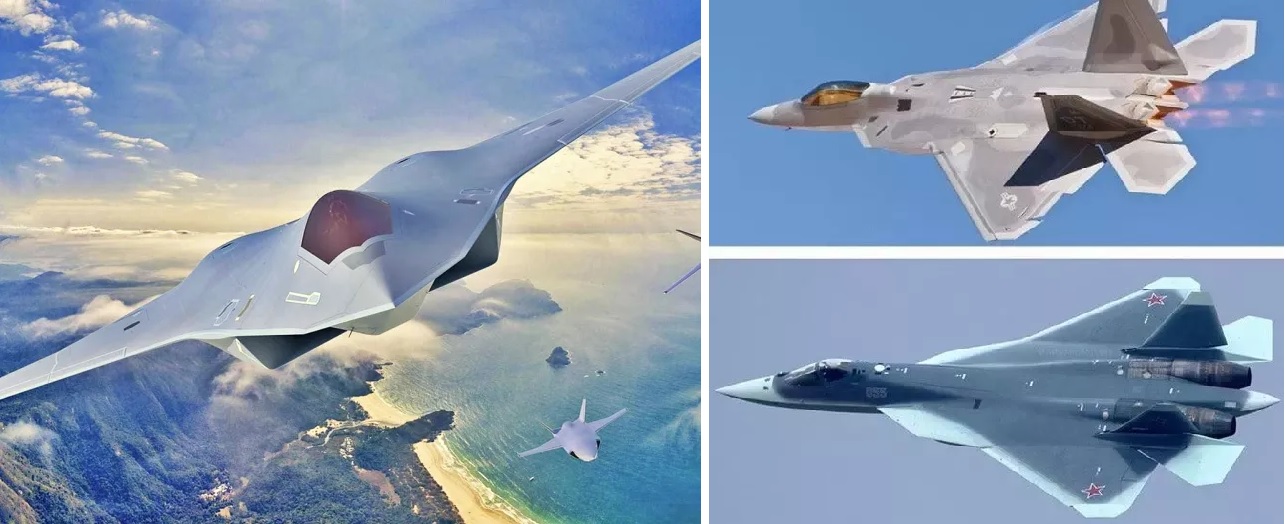 Key Differences Between 5th vs. 6th Generation Fighter Jets
Key Differences Between 5th vs. 6th Generation Fighter Jets
-
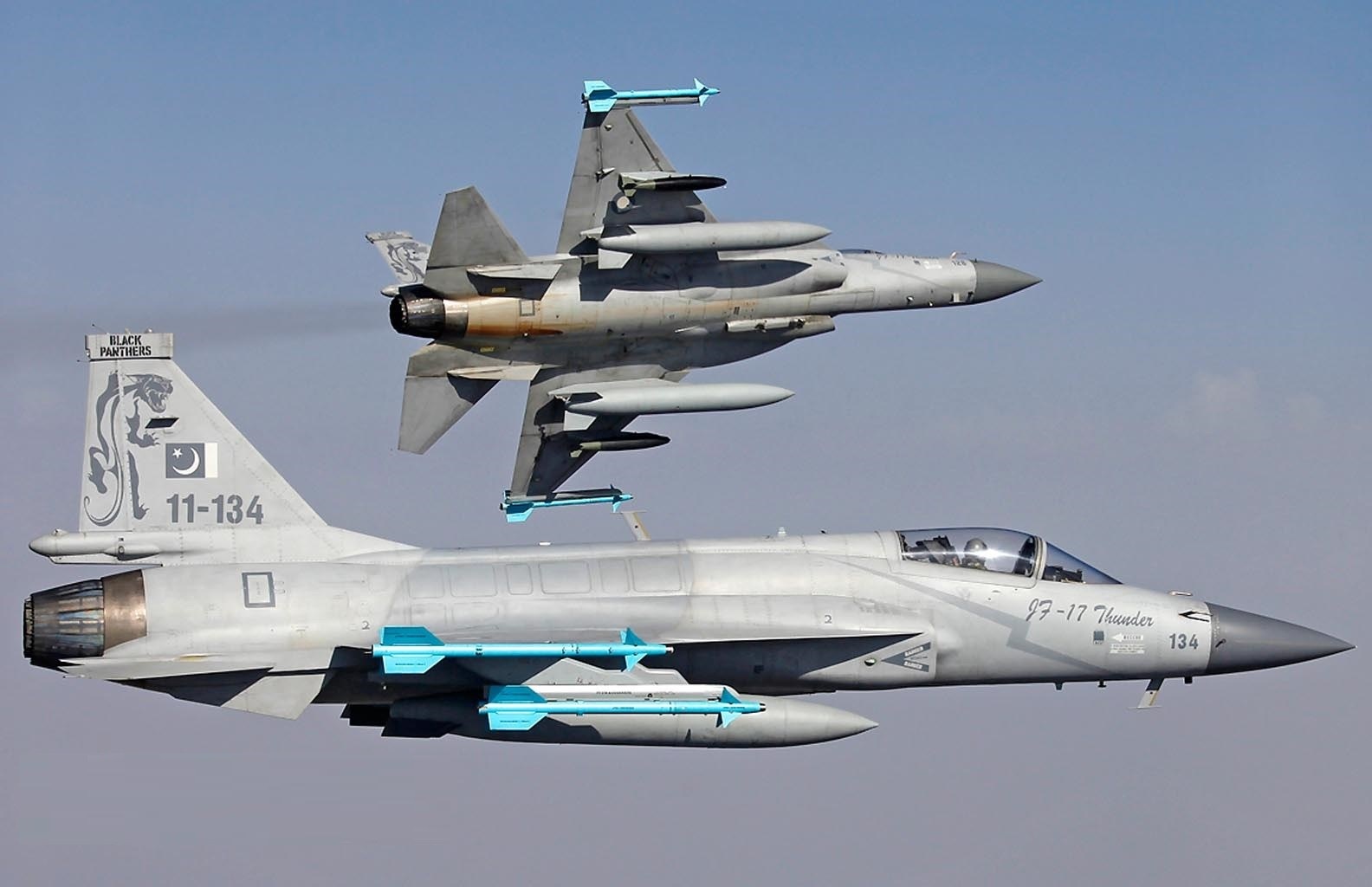 Pakistan Air Force to Unveil Stealth-Enhanced JF-17 Block 4 Fighter Jet by 2028
Pakistan Air Force to Unveil Stealth-Enhanced JF-17 Block 4 Fighter Jet by 2028
-
 Pakistan Announces 15% Increase in Defence Budget for 2024-25 Amid Economic Crisis
Pakistan Announces 15% Increase in Defence Budget for 2024-25 Amid Economic Crisis
-
 India's TEDBF Program Takes Shape First Flight by 2028: Aiming for Naval Supremacy with Advanced Stealth and Technology
India's TEDBF Program Takes Shape First Flight by 2028: Aiming for Naval Supremacy with Advanced Stealth and Technology
-
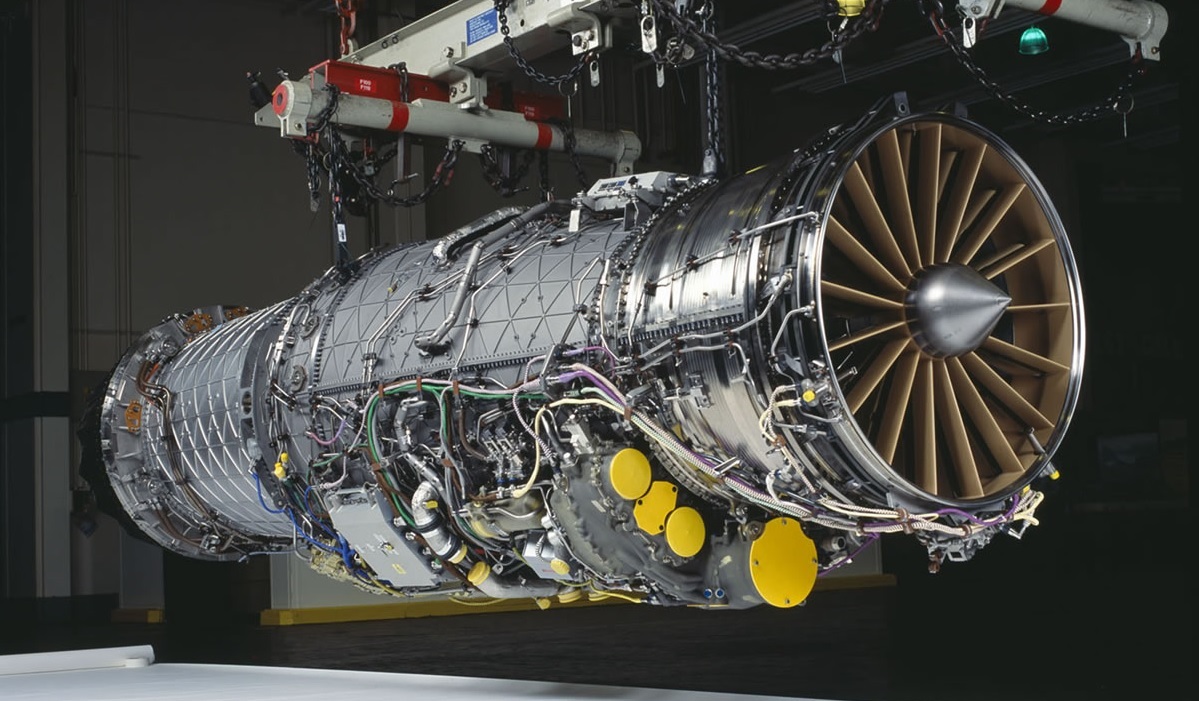 India’s AMCA Engine Decision: Safran vs. Rolls-Royce Final Expected by 2025
India’s AMCA Engine Decision: Safran vs. Rolls-Royce Final Expected by 2025
-
 What Would Happen if the USA Left NATO? A Comprehensive Analysis
What Would Happen if the USA Left NATO? A Comprehensive Analysis
-
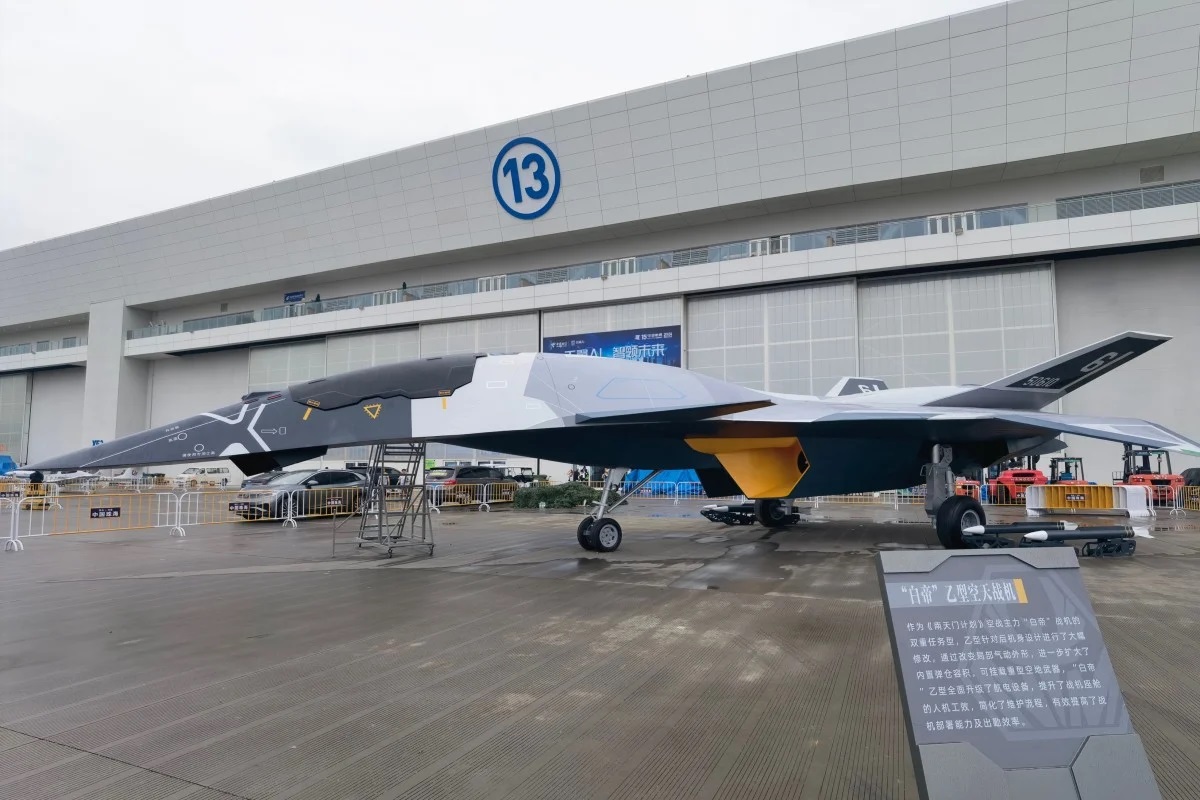 China Unveils the 6th-Generation “Baidi B-Type” Aerospace Fighter Concept
China Unveils the 6th-Generation “Baidi B-Type” Aerospace Fighter Concept
Top Trending in 4 Days
-
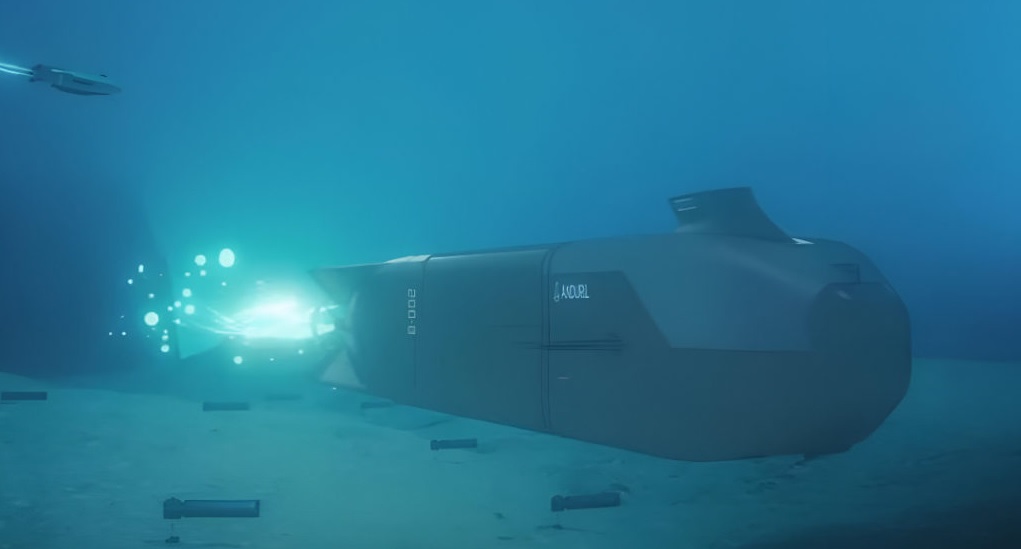 AI-Driven Submarine Hunt Could End Era of “Invisible” Underwater Threats
AI-Driven Submarine Hunt Could End Era of “Invisible” Underwater Threats
-
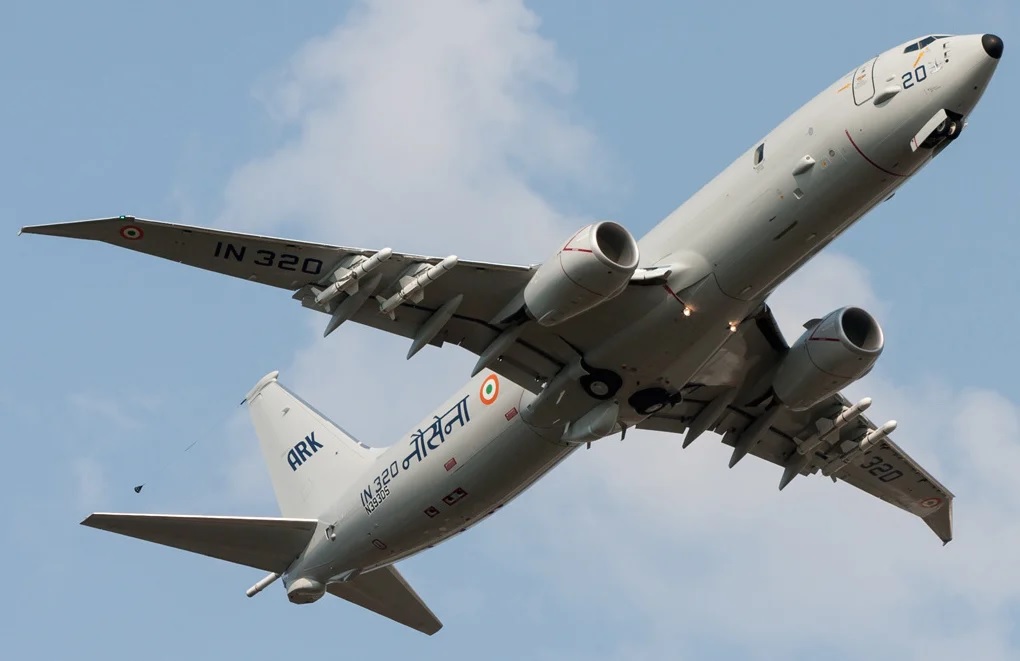 U.S. Delegation to Visit India for $4 Billion P-8I Aircraft Deal Talks
U.S. Delegation to Visit India for $4 Billion P-8I Aircraft Deal Talks
-
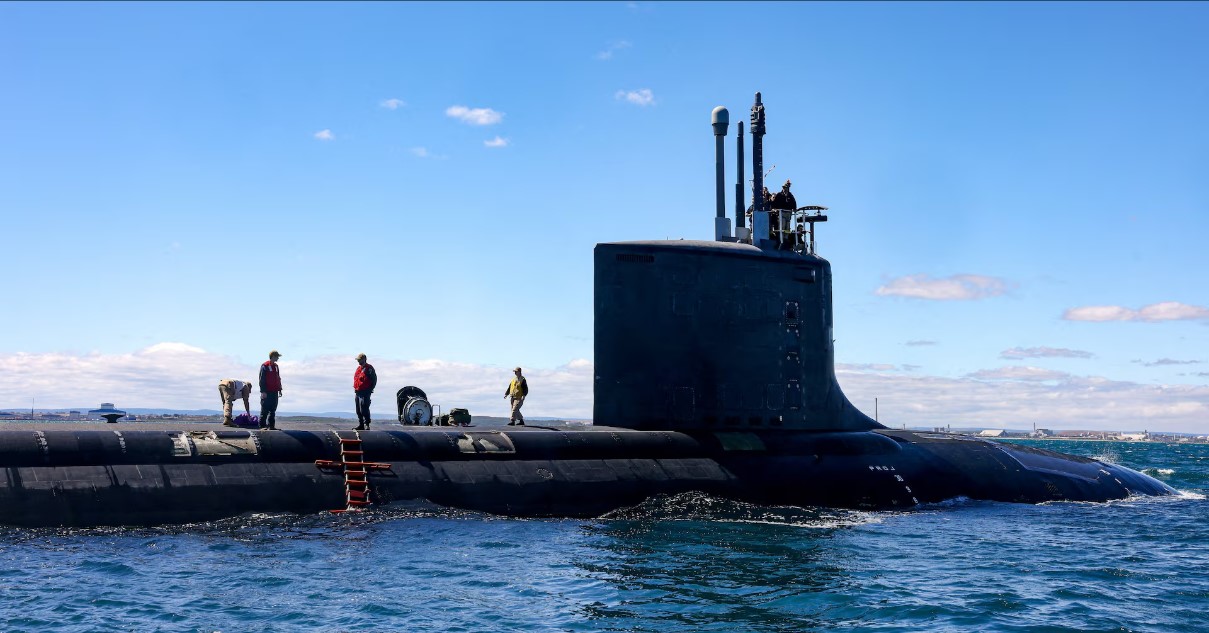 Australia Commits A$12 Billion to Upgrade Henderson Precinct as AUKUS Submarine Hub
Australia Commits A$12 Billion to Upgrade Henderson Precinct as AUKUS Submarine Hub
-
 Defence Ministry Reviews IAF's Proposal for 114 'Made in India' Rafale Fighter Jets
Defence Ministry Reviews IAF's Proposal for 114 'Made in India' Rafale Fighter Jets
-
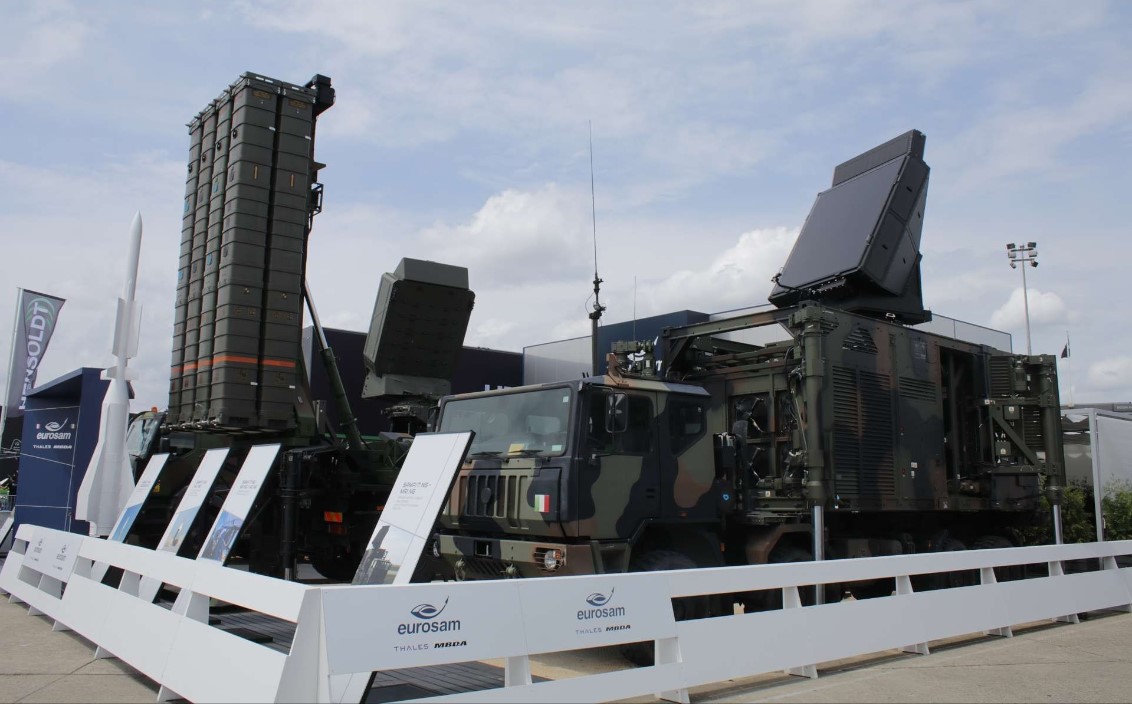 Denmark to Invest $ 9.1 Billion in European Air and Missile Defense Systems
Denmark to Invest $ 9.1 Billion in European Air and Missile Defense Systems
-
 China's AI-Driven Missile Production Line Achieves Over 100 Missiles Per Day
China's AI-Driven Missile Production Line Achieves Over 100 Missiles Per Day
-
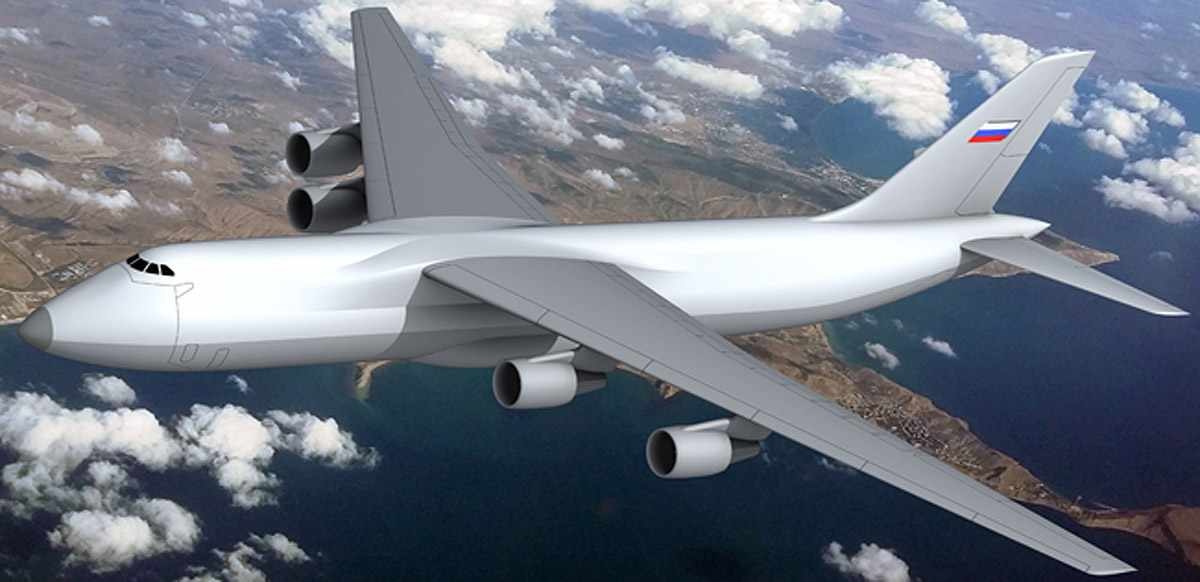 India May Be Invited to Co-Develop Russia’s Il-100 “Slon” as Il-76 Fleet Wanes
India May Be Invited to Co-Develop Russia’s Il-100 “Slon” as Il-76 Fleet Wanes
-
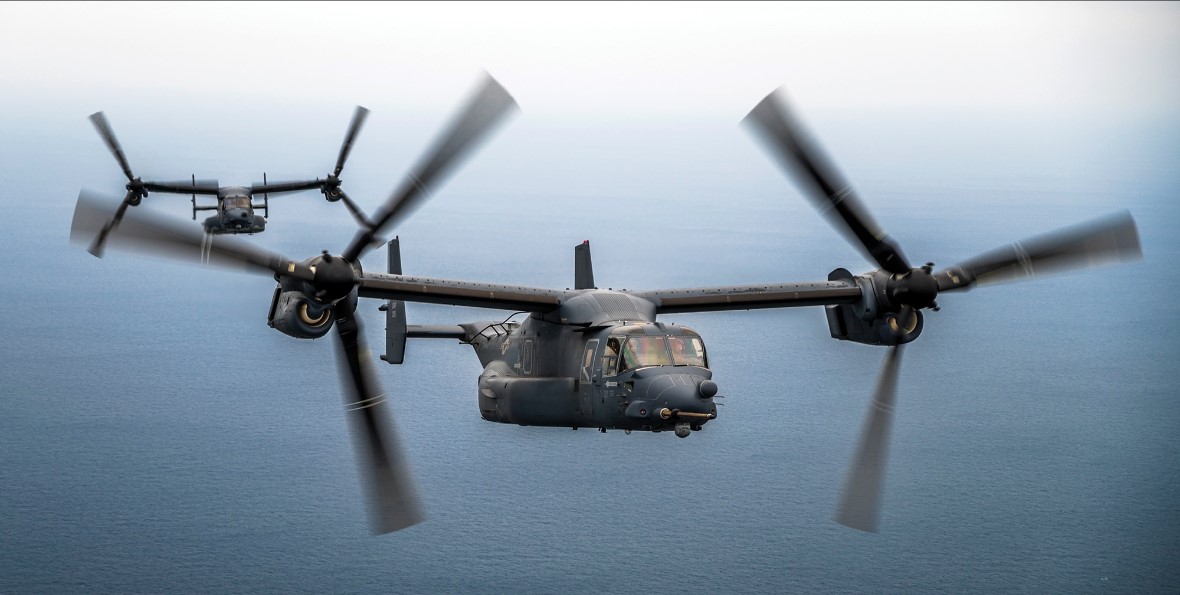 U.S Air Force Refines Plan for New Special Operations “Power Projection Wing” at Davis-Monthan
U.S Air Force Refines Plan for New Special Operations “Power Projection Wing” at Davis-Monthan
